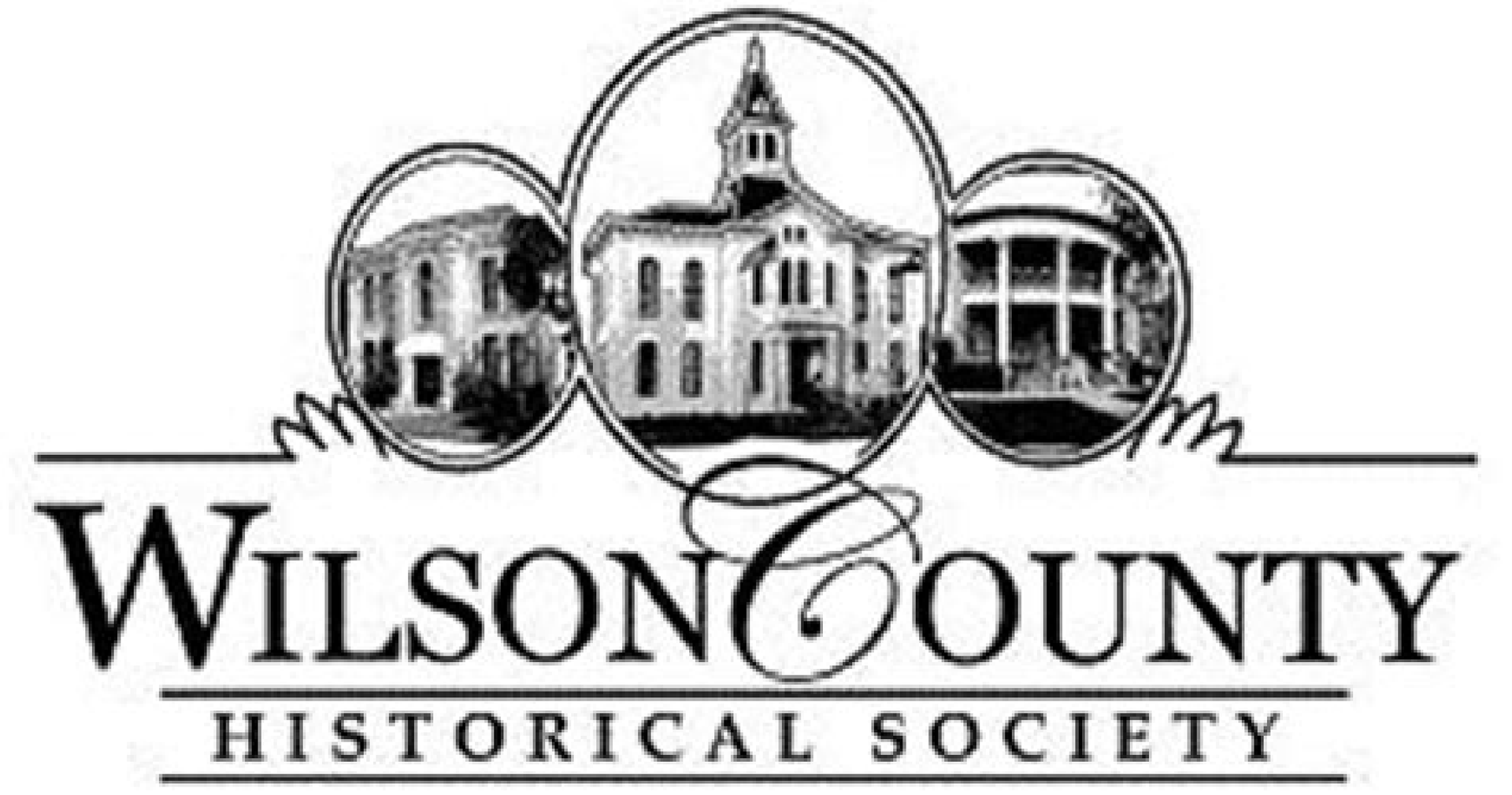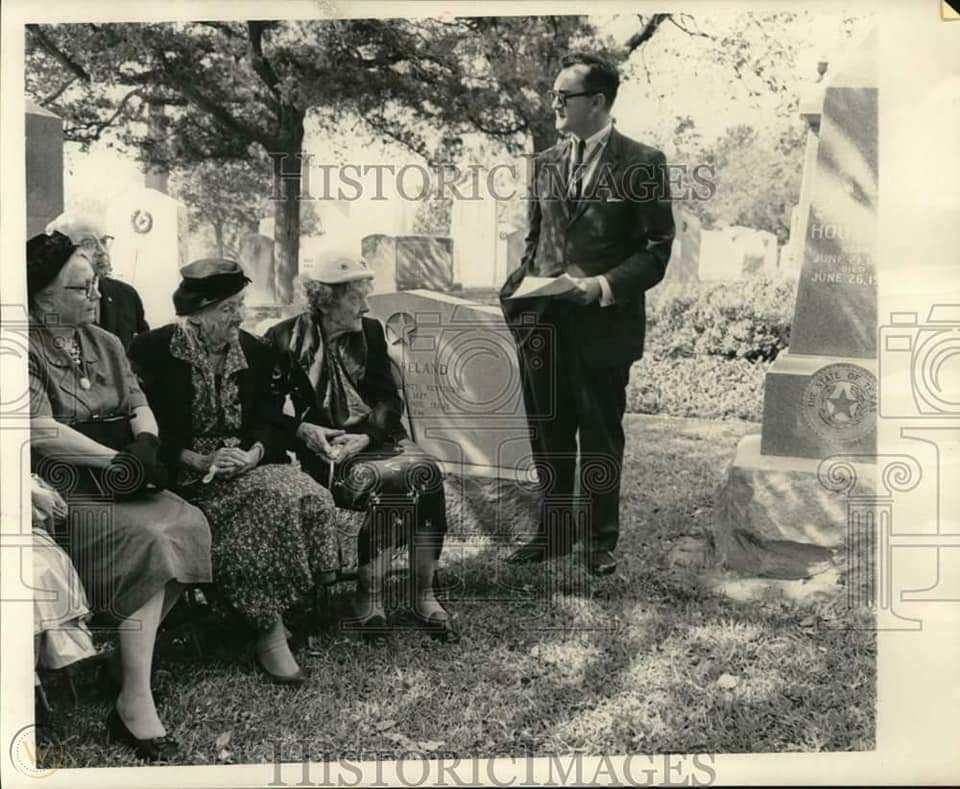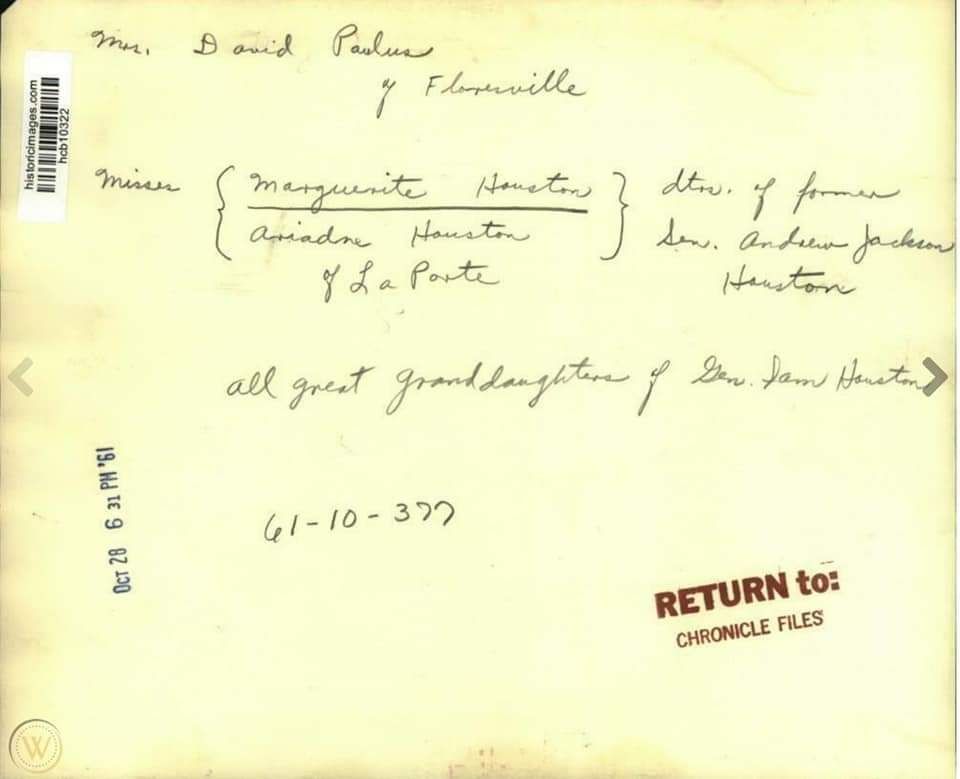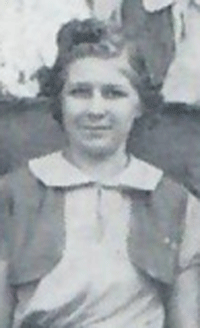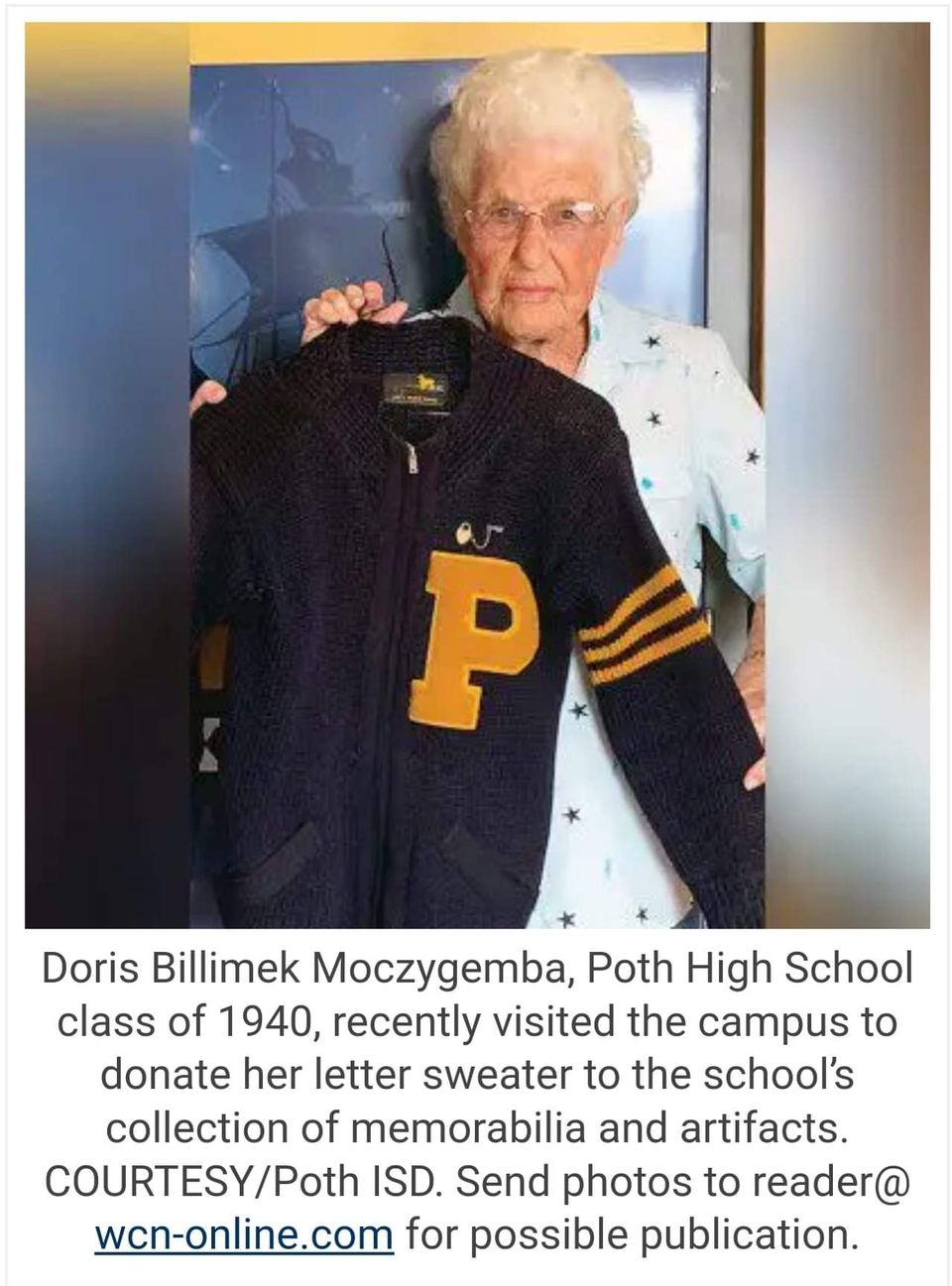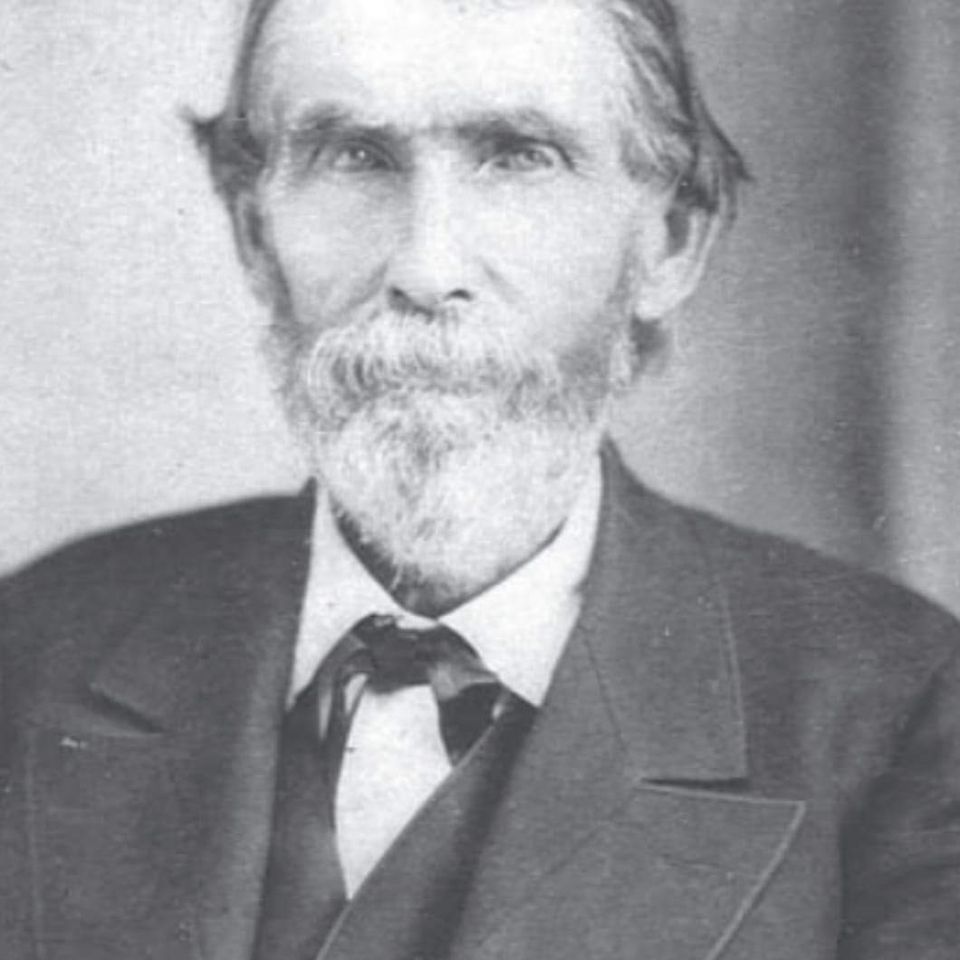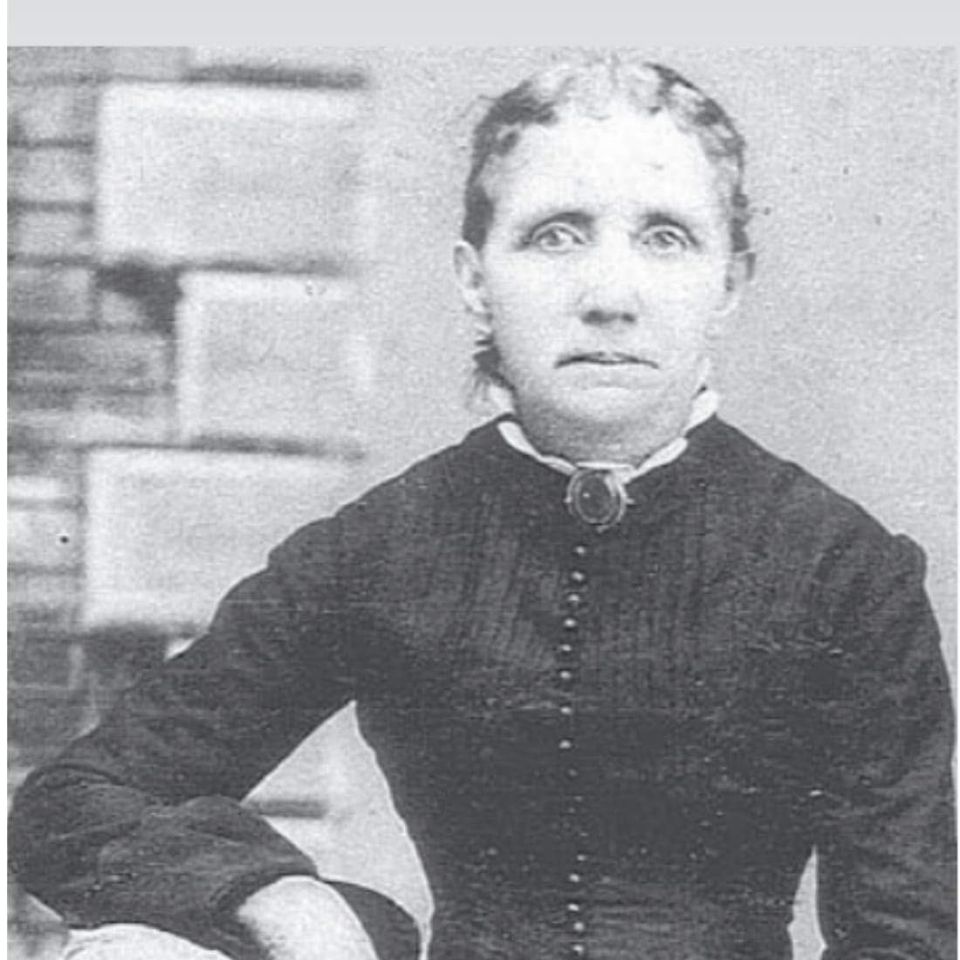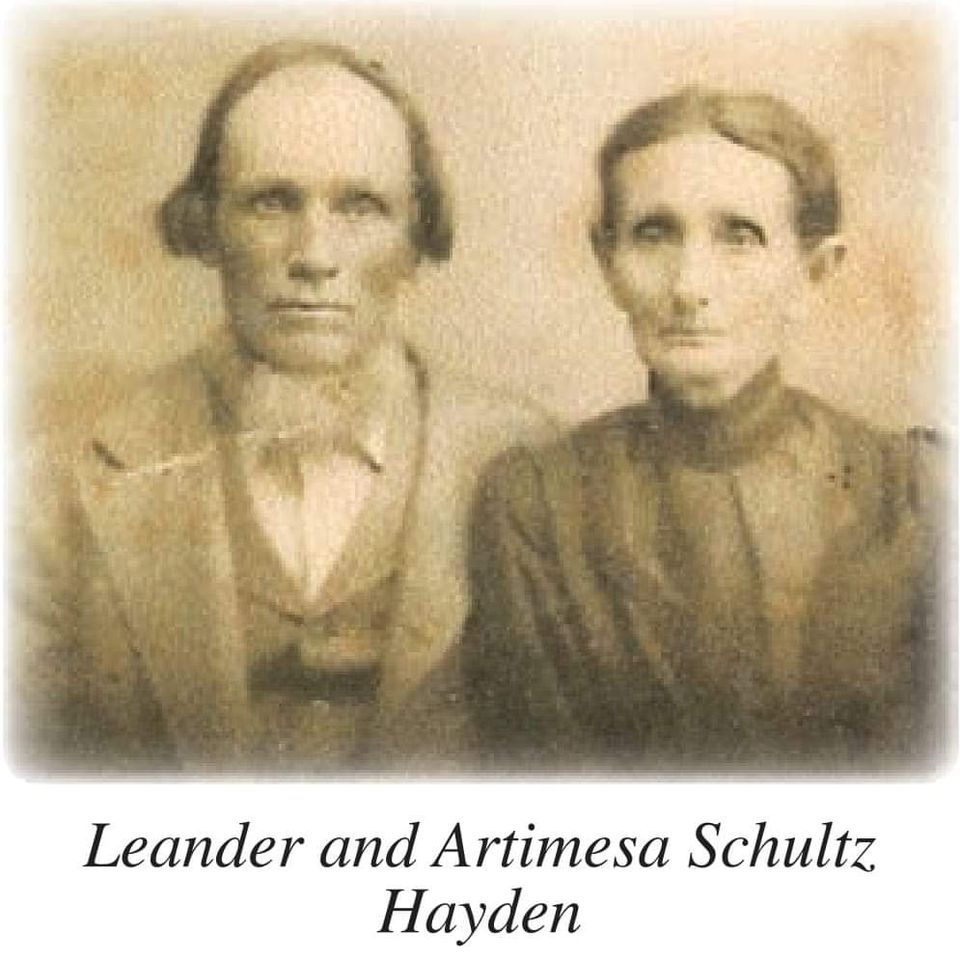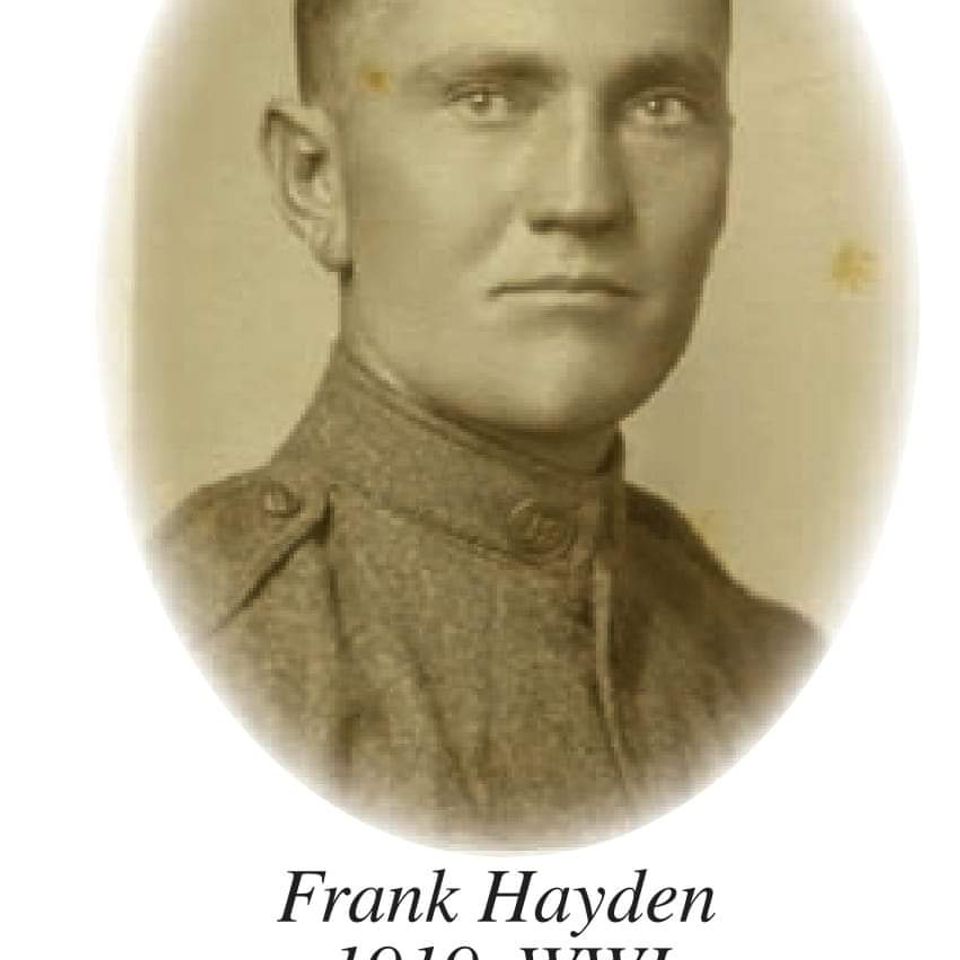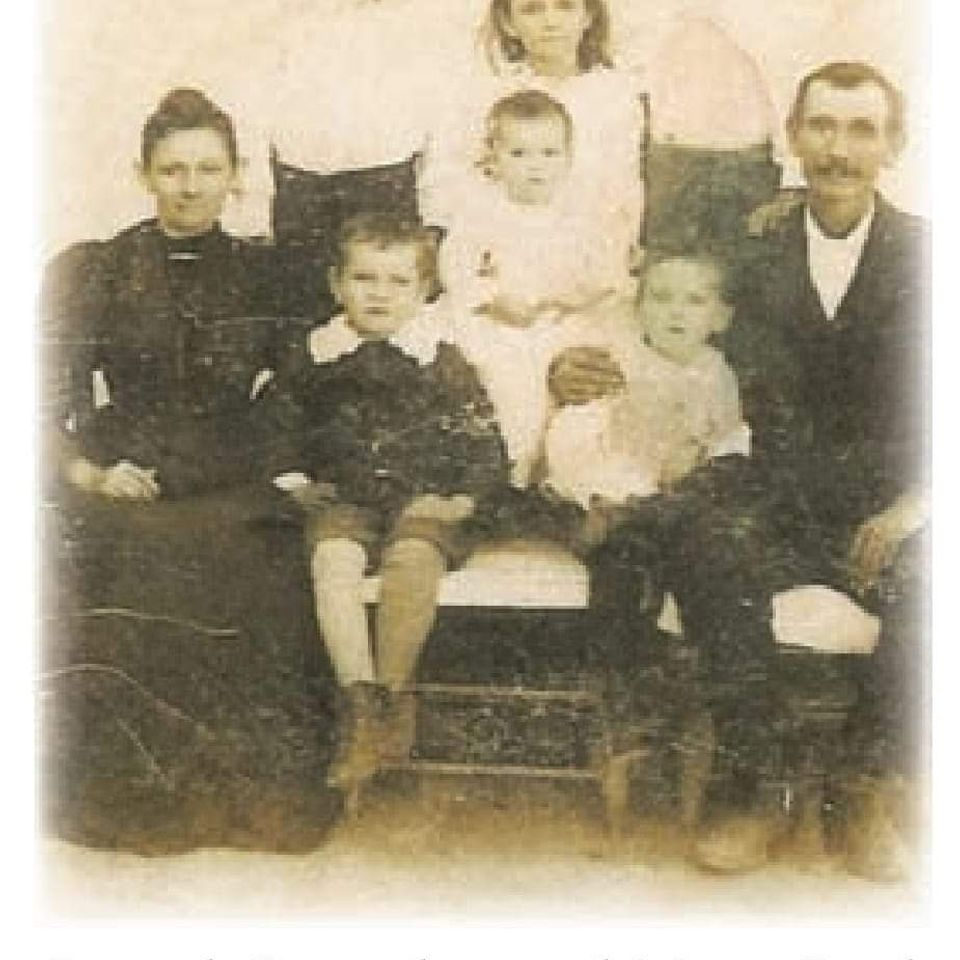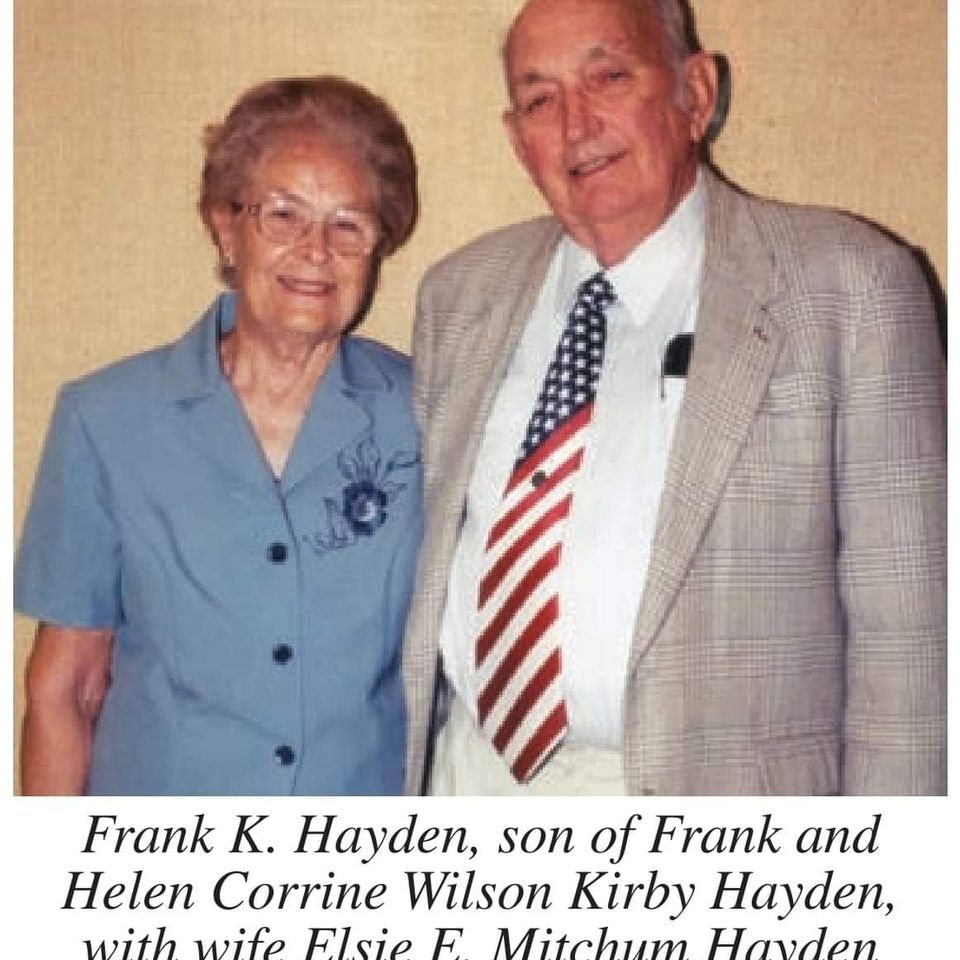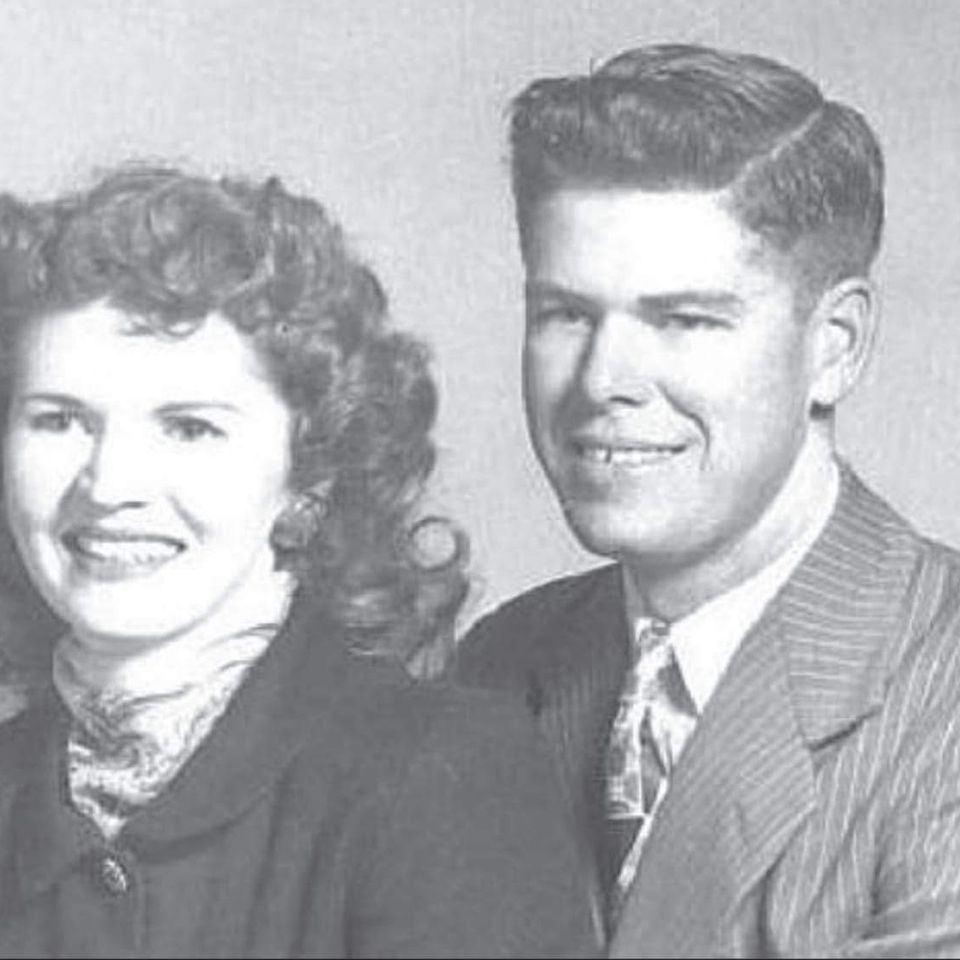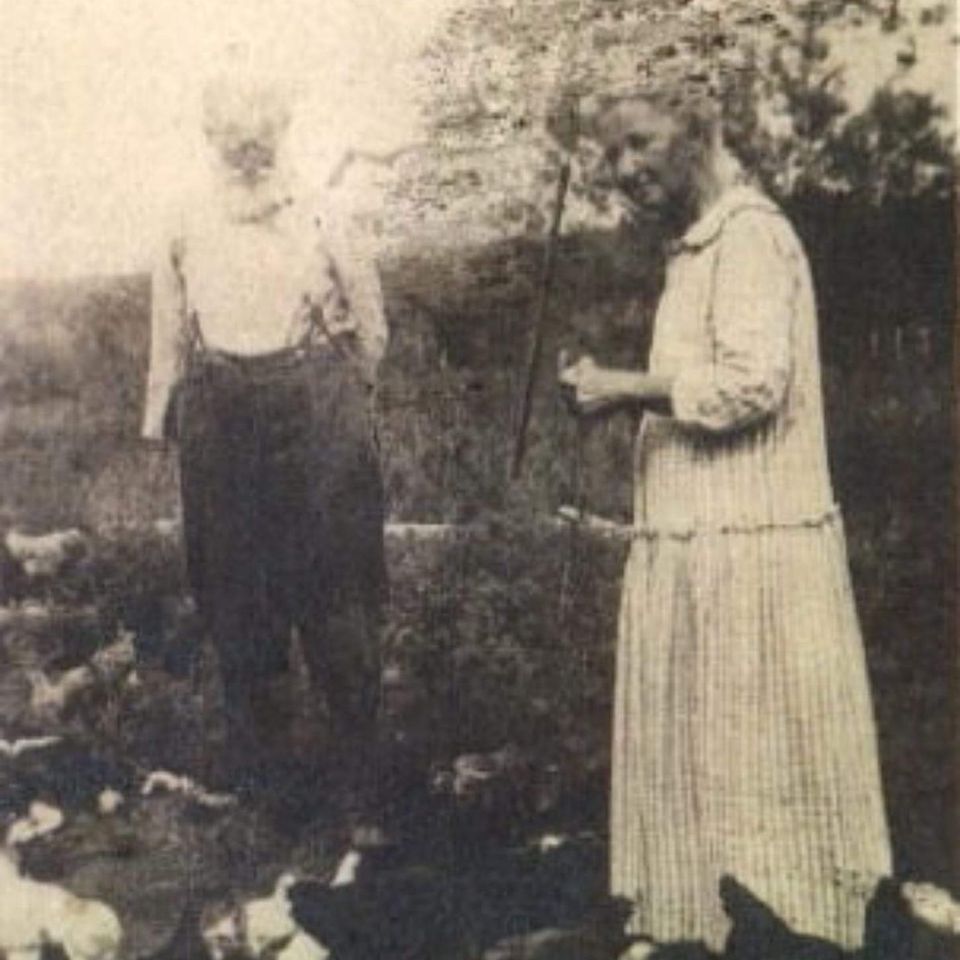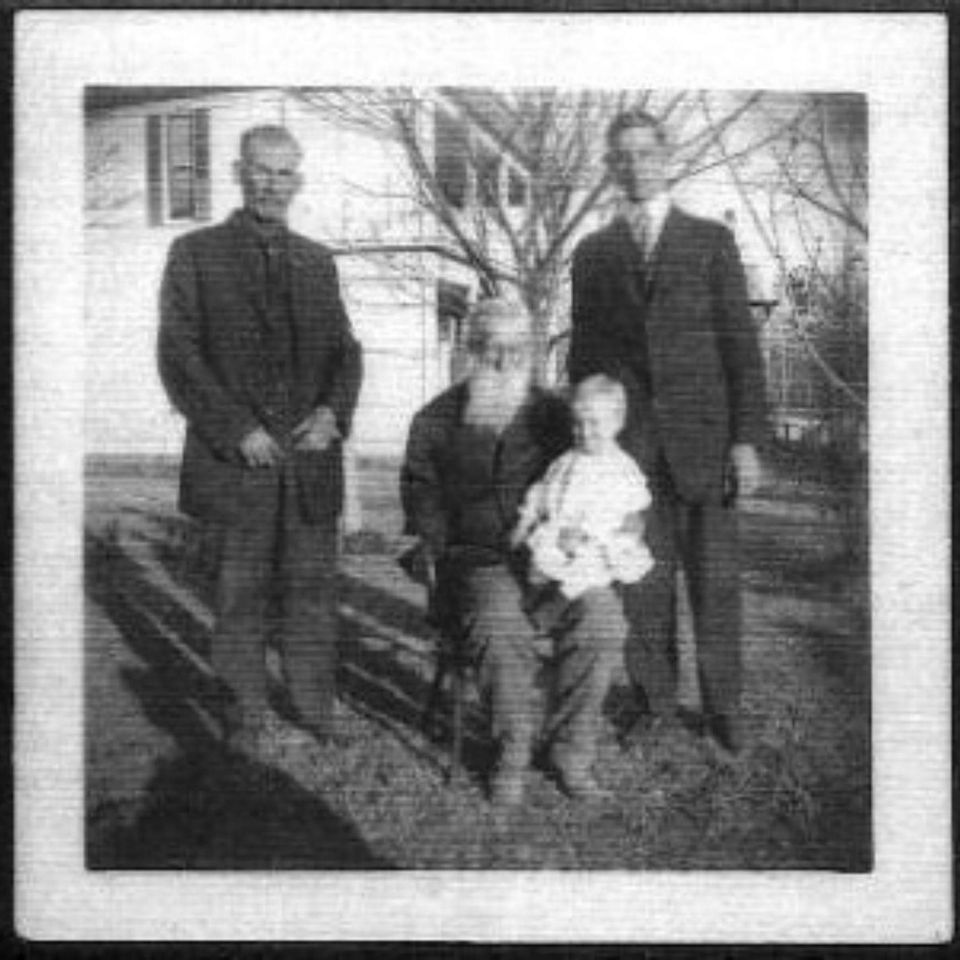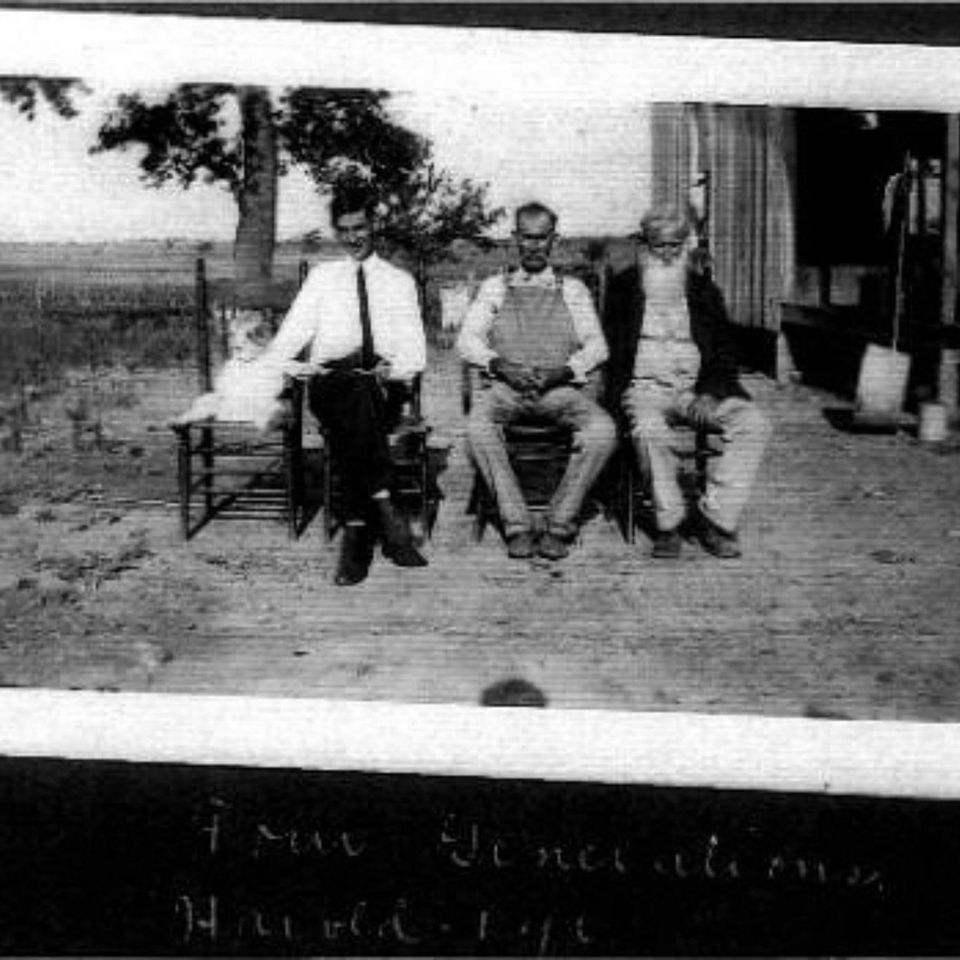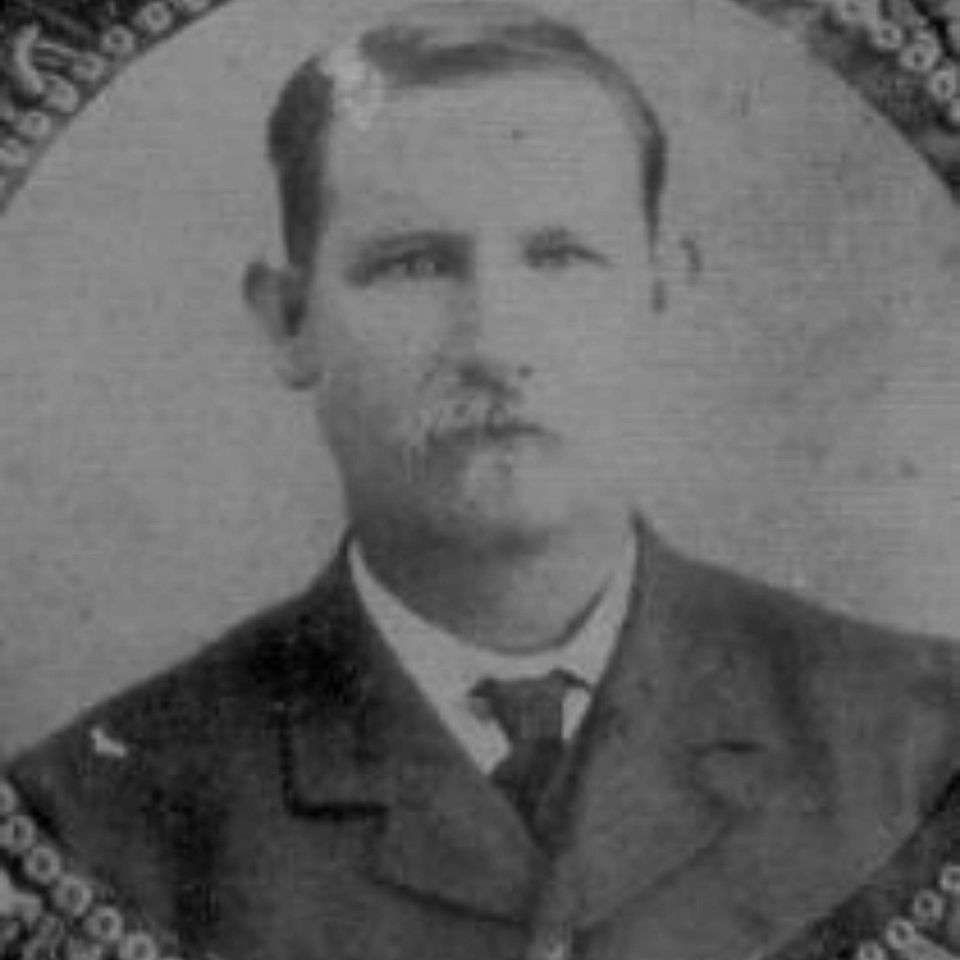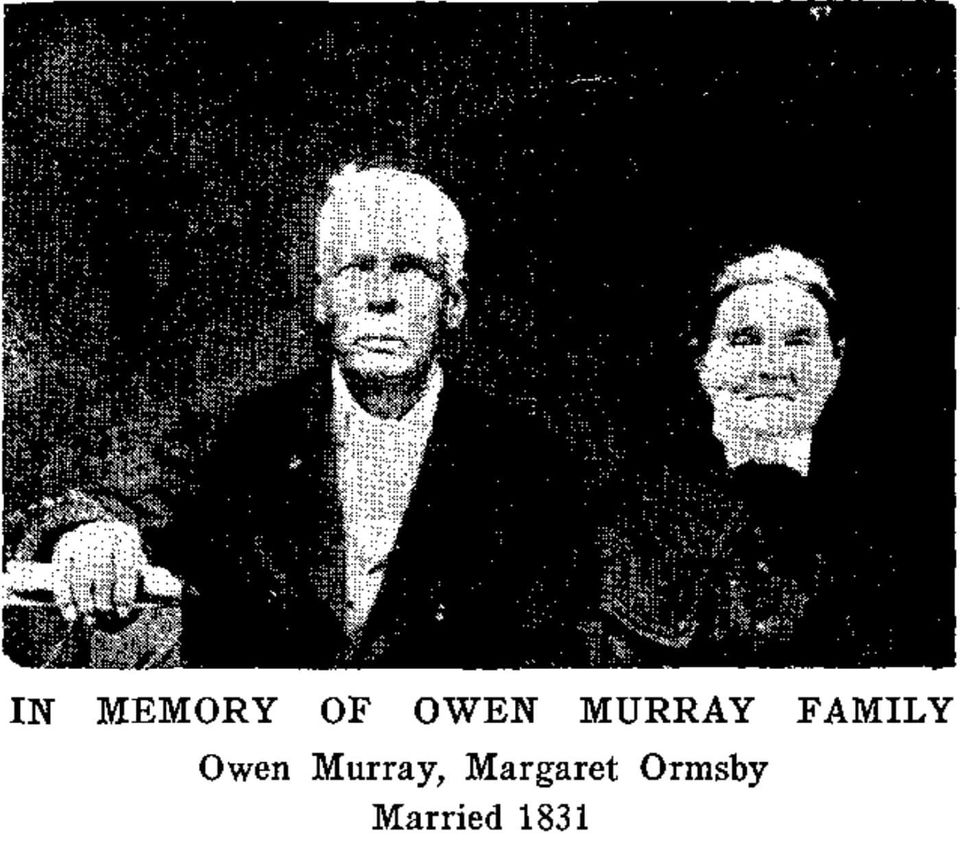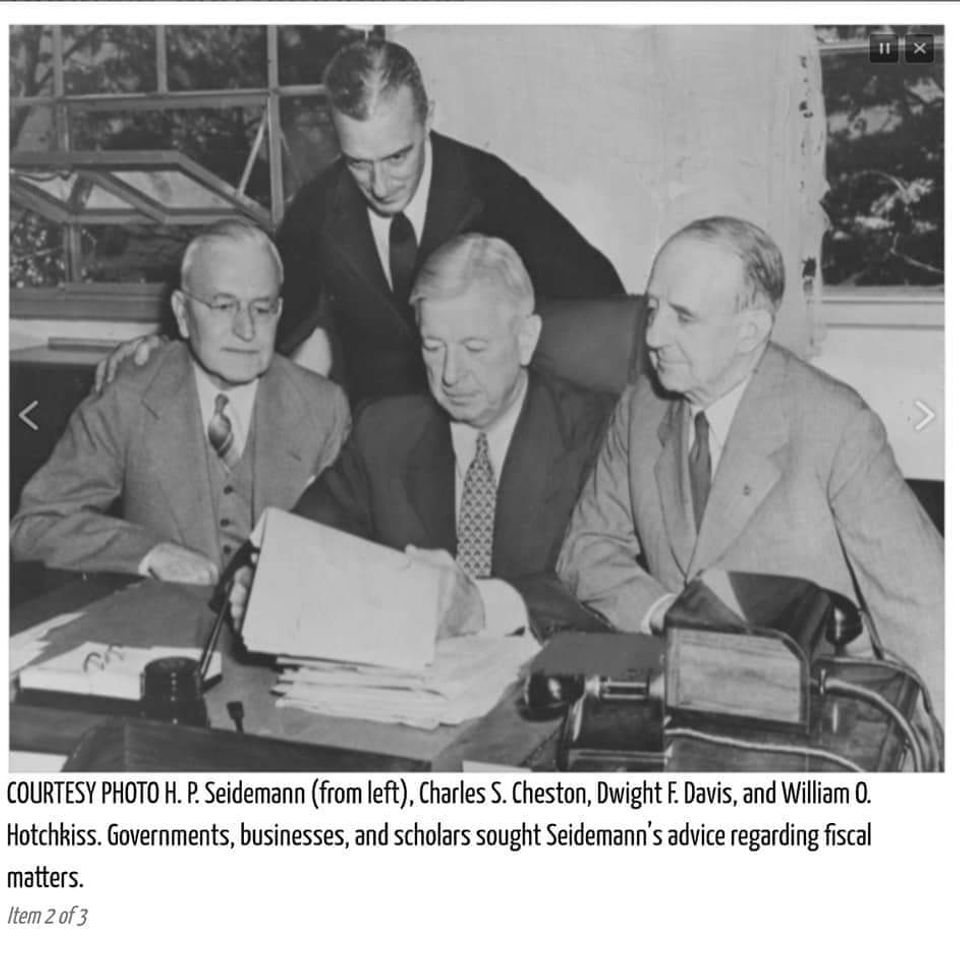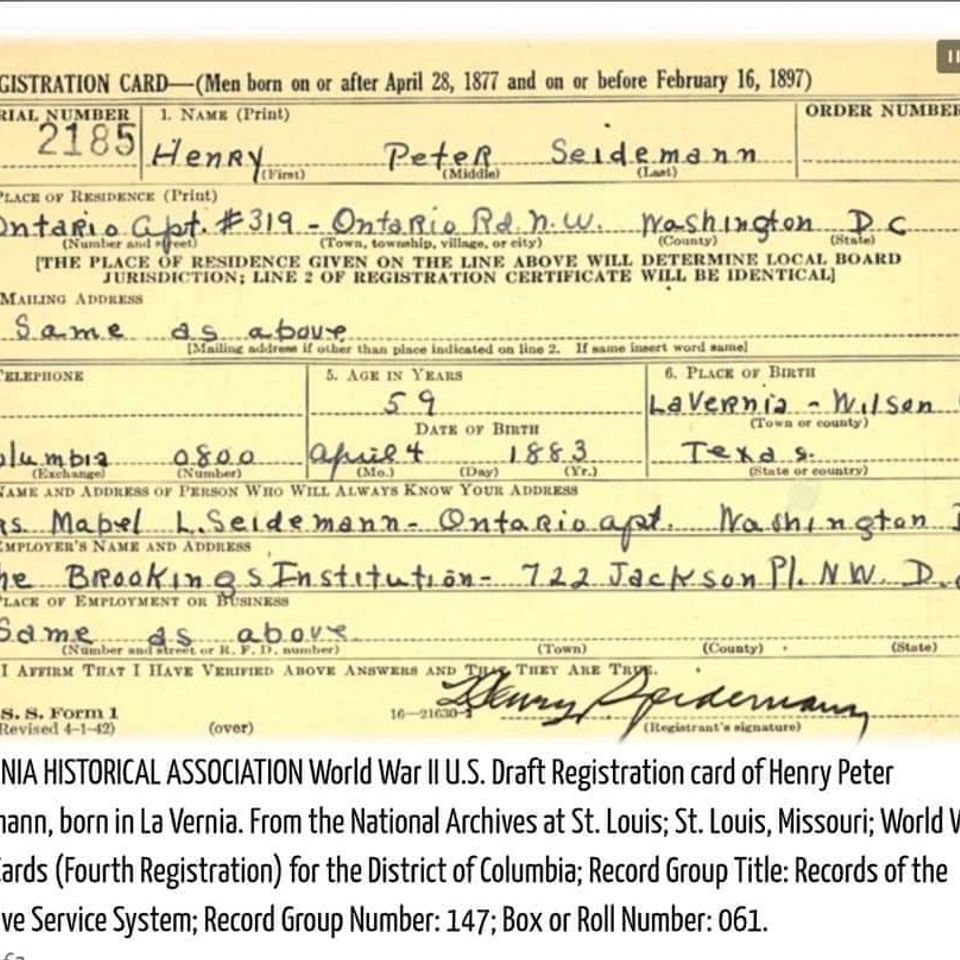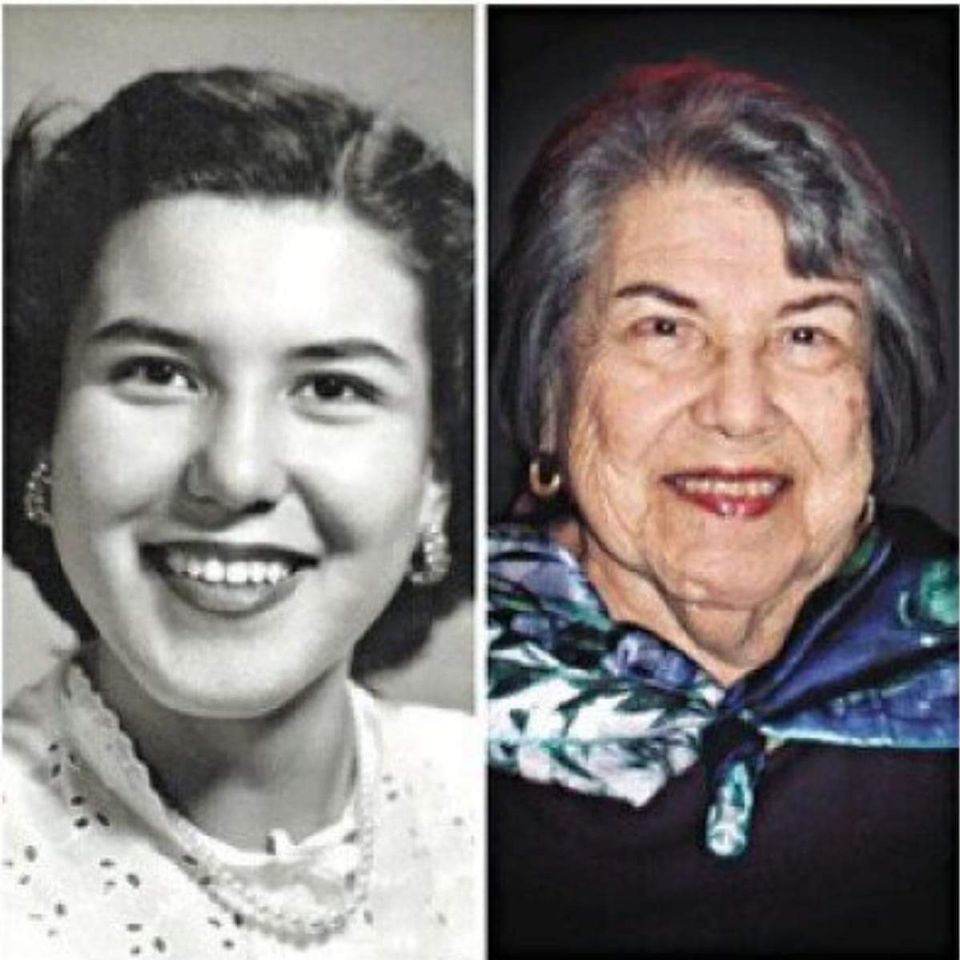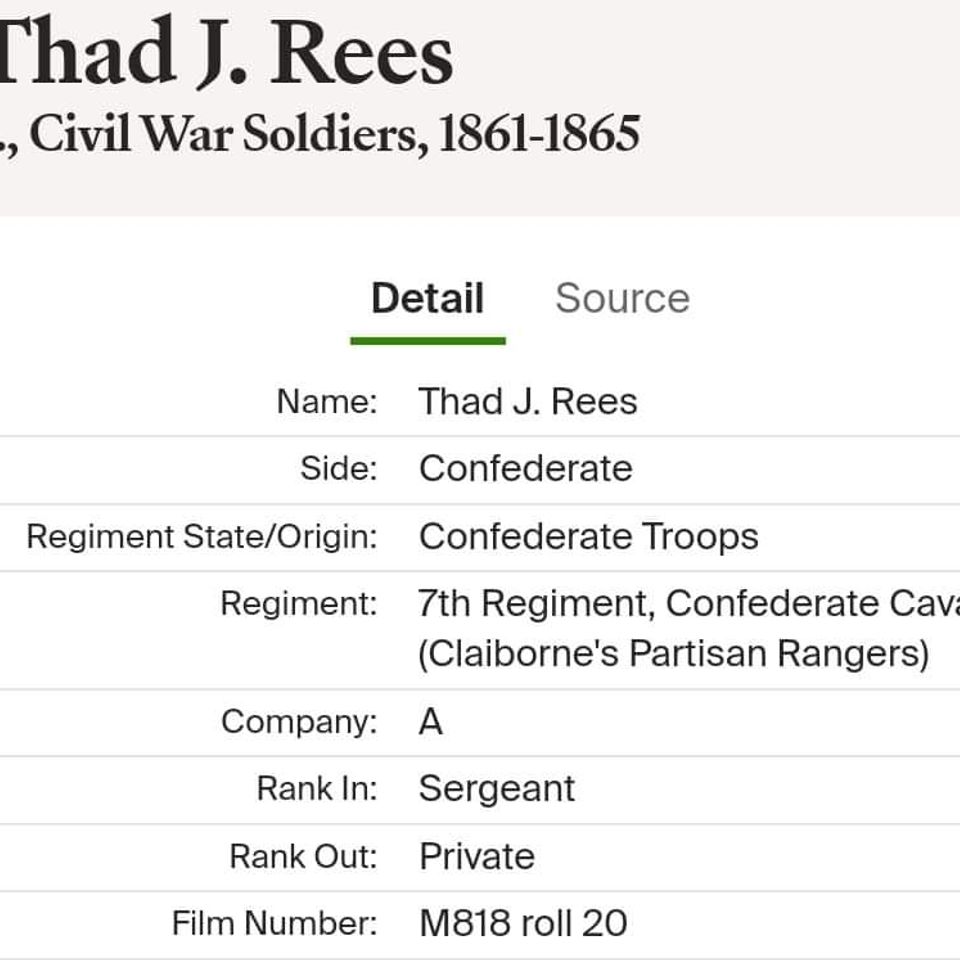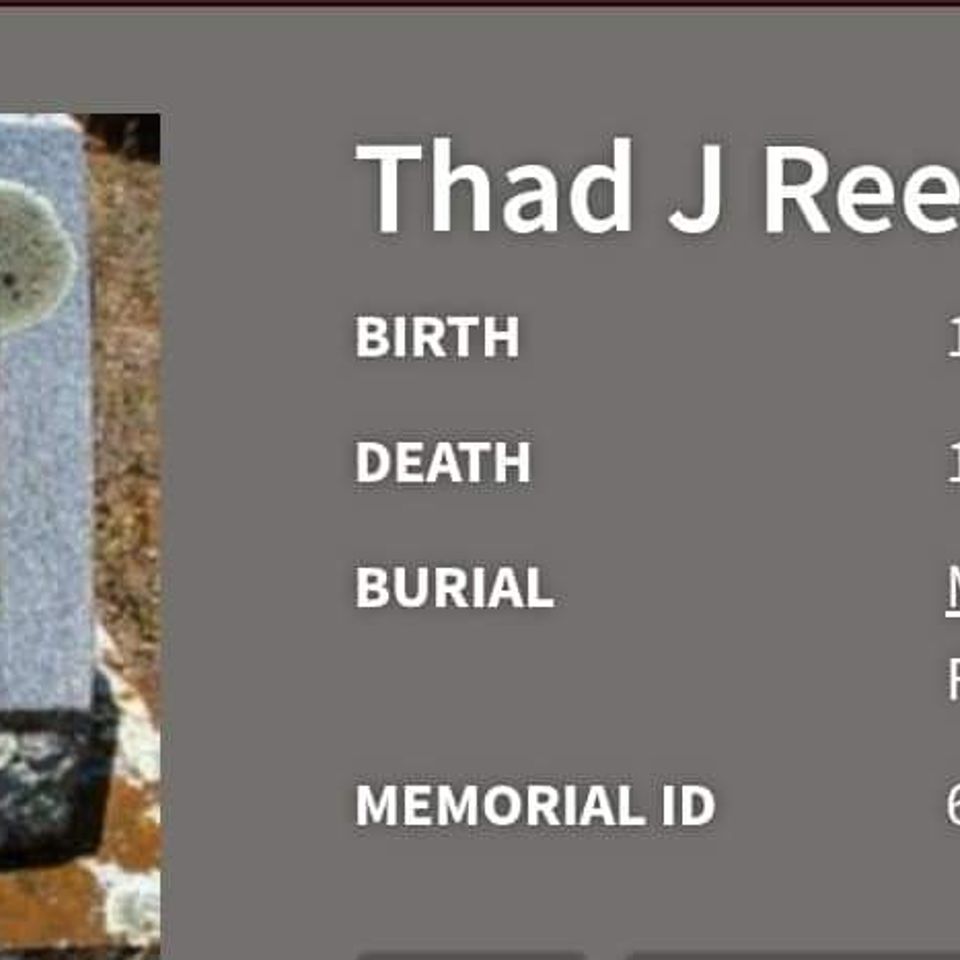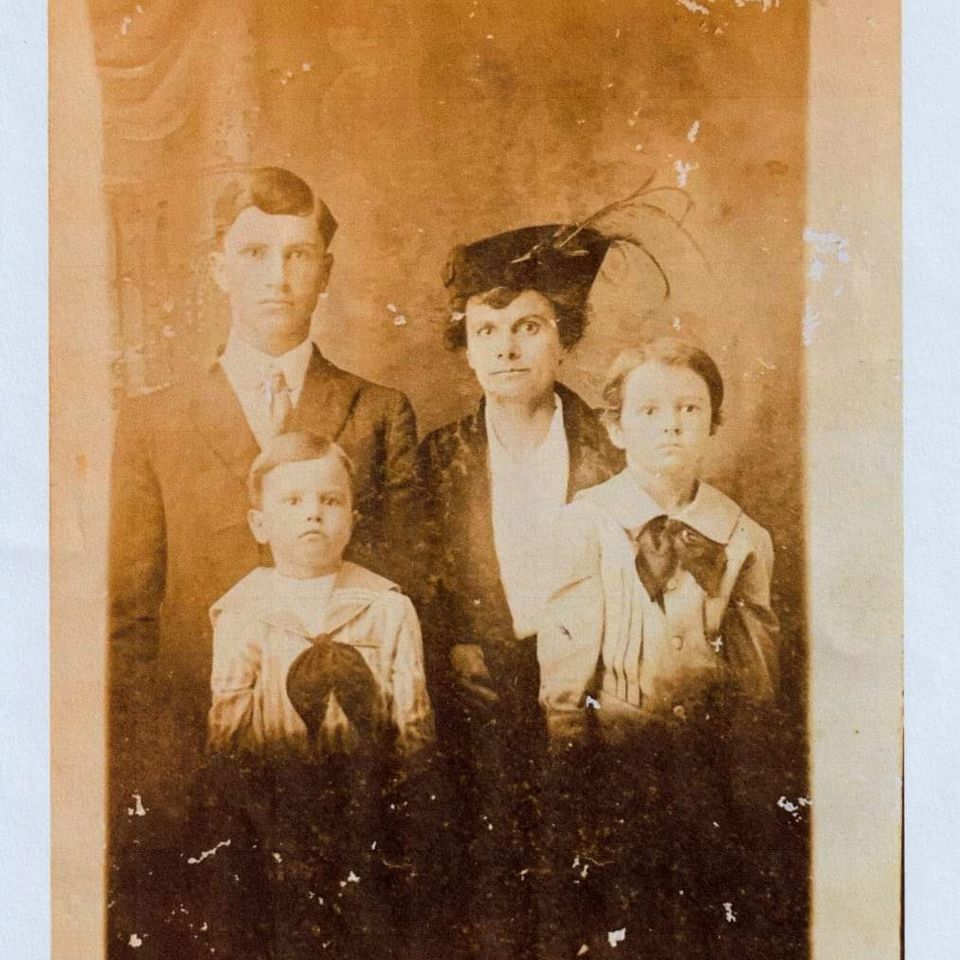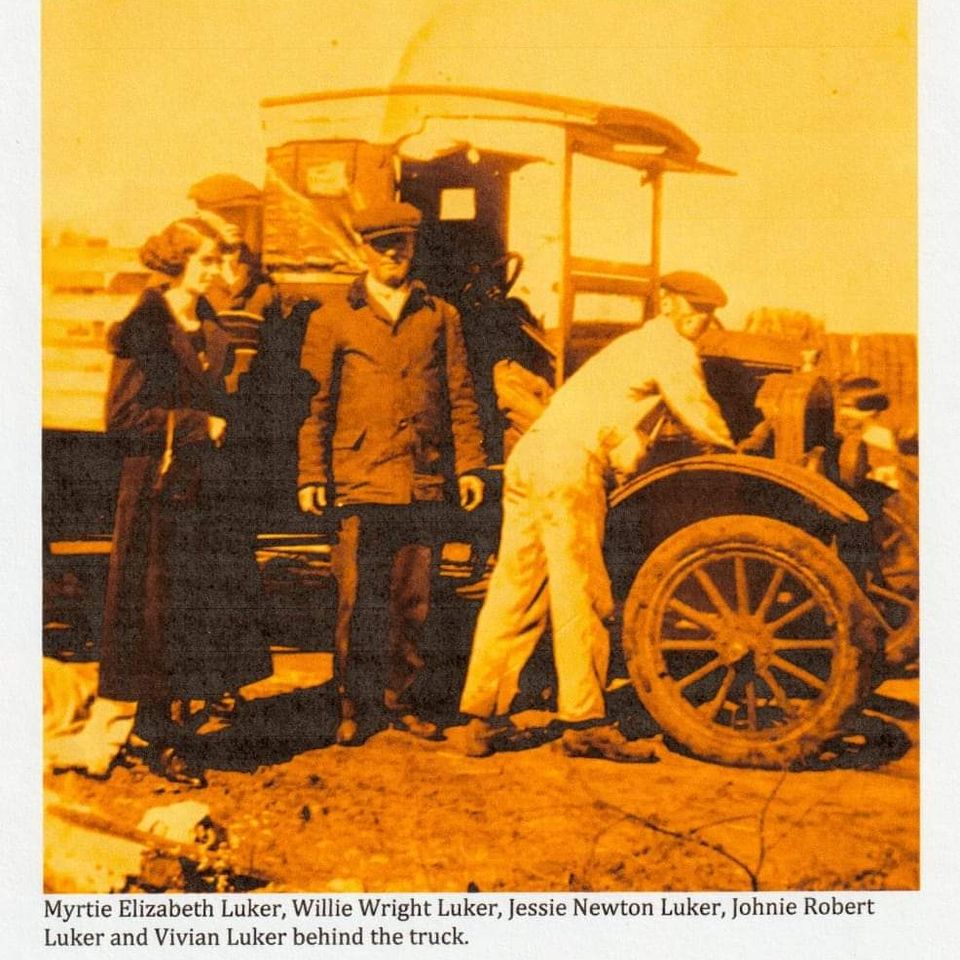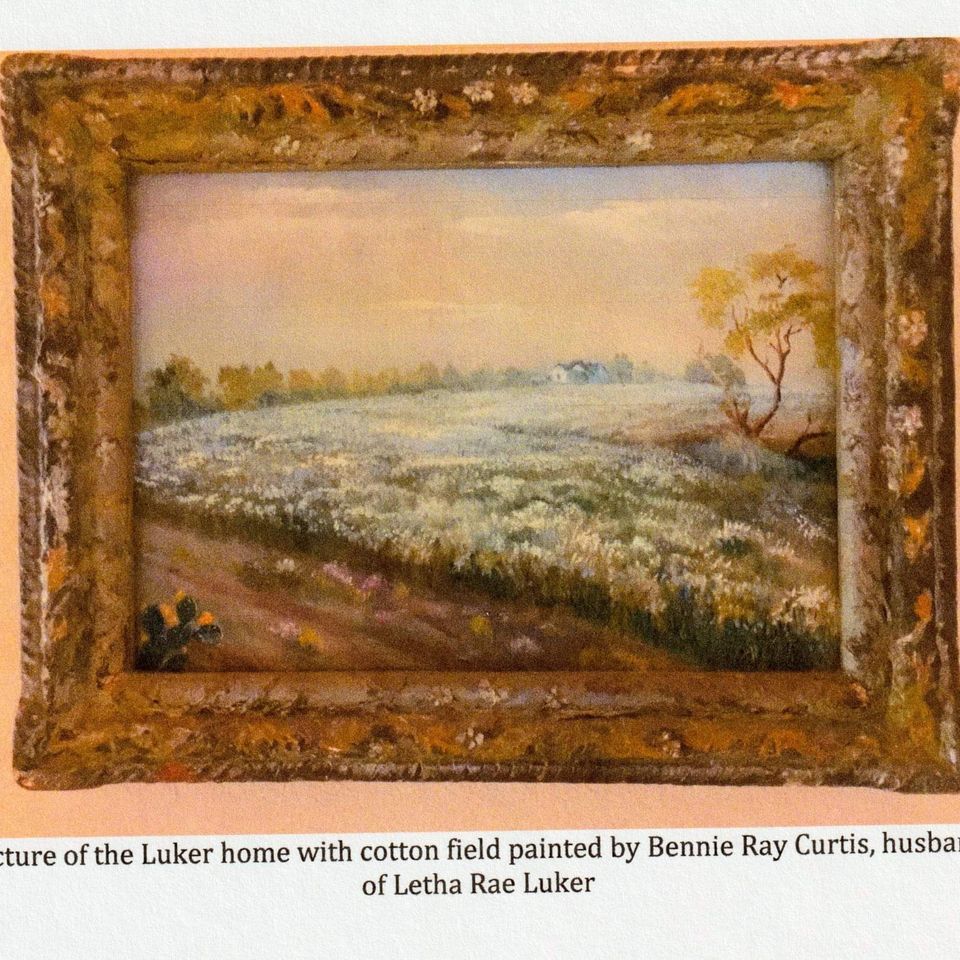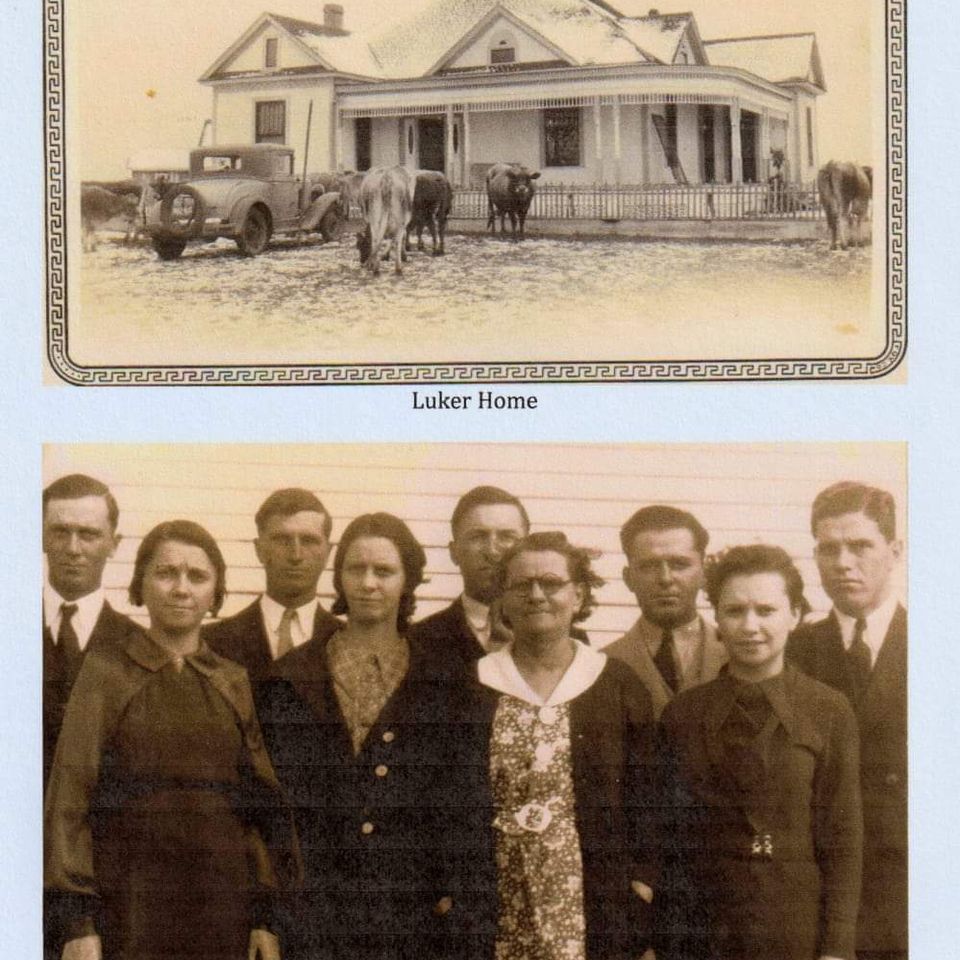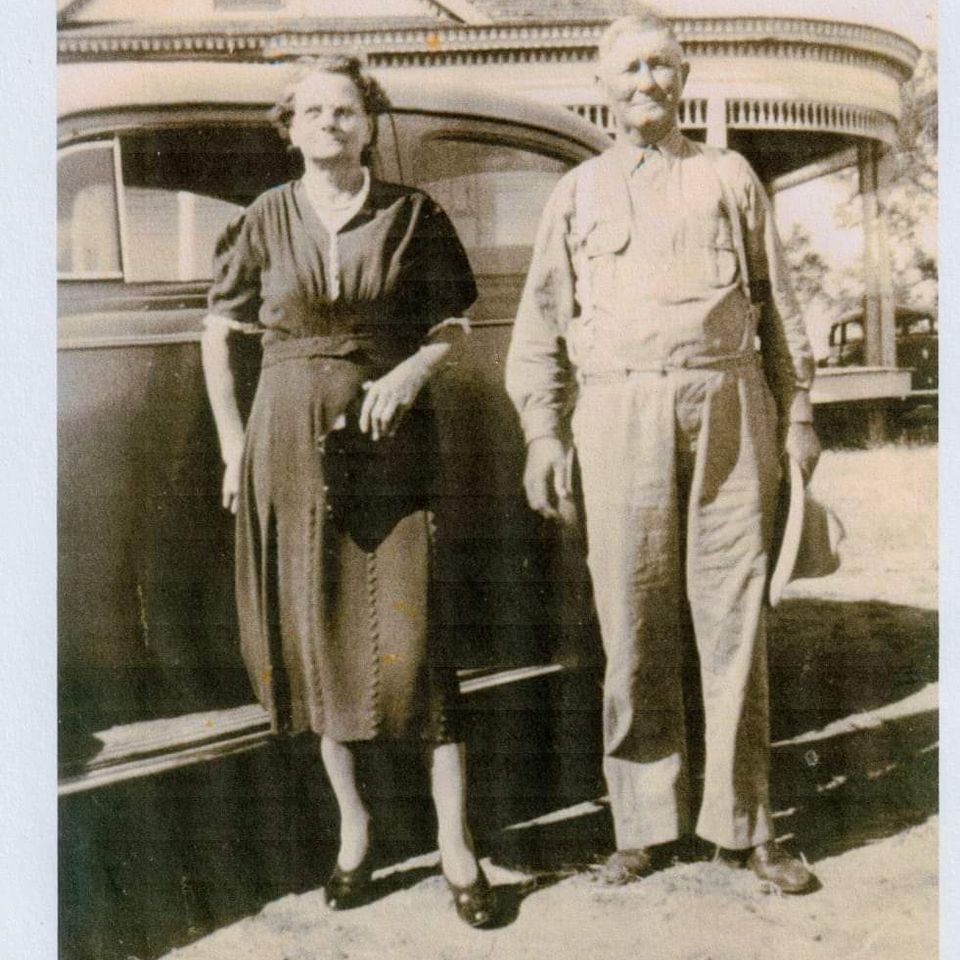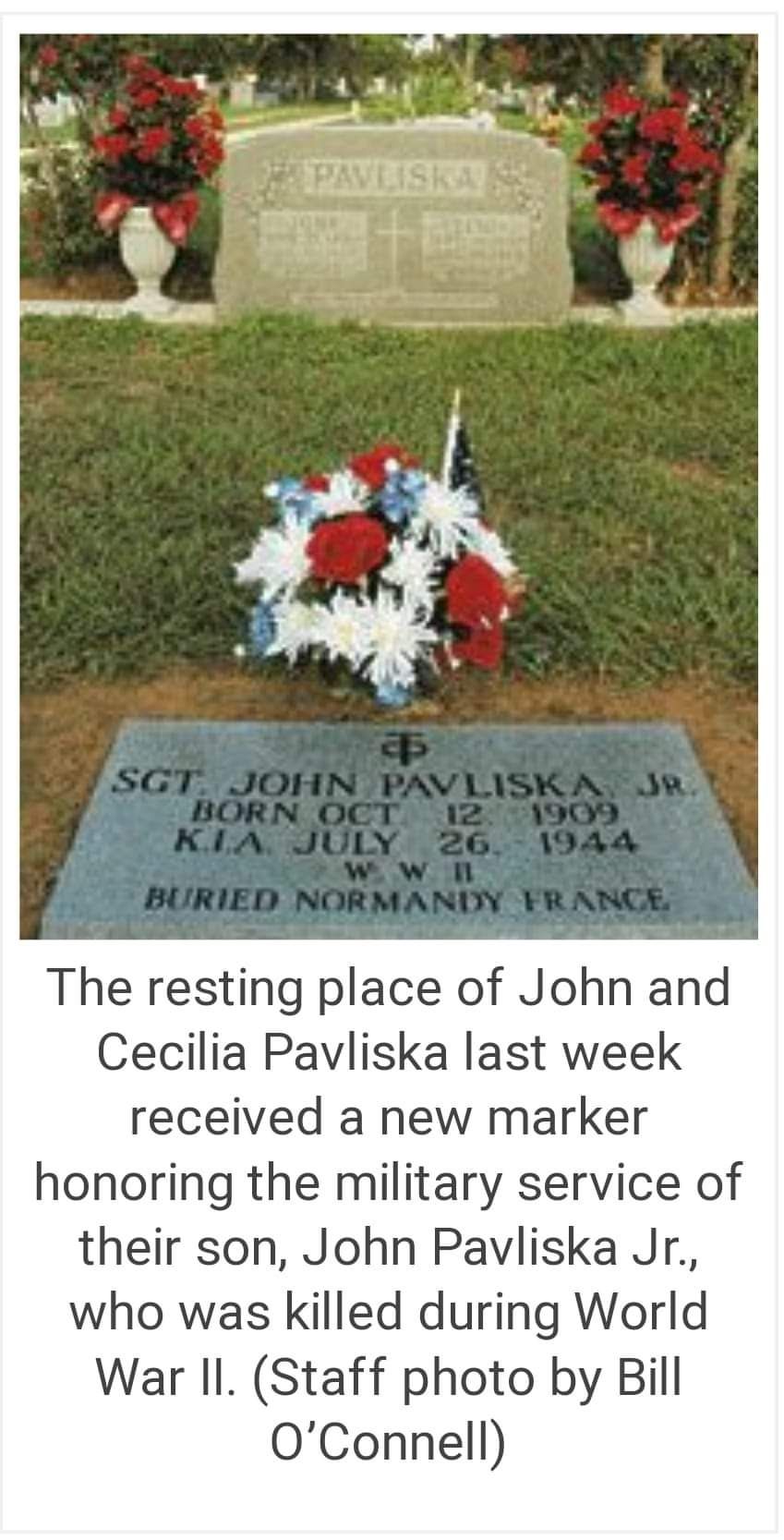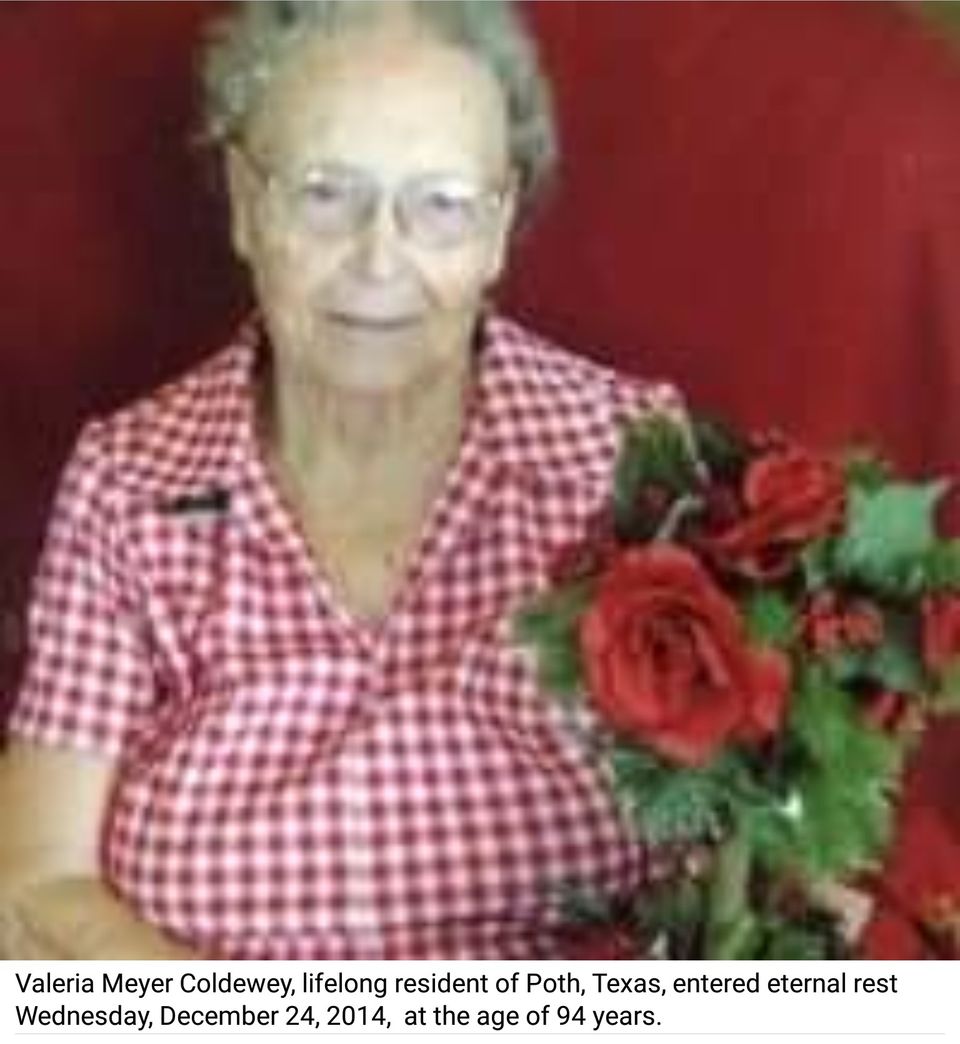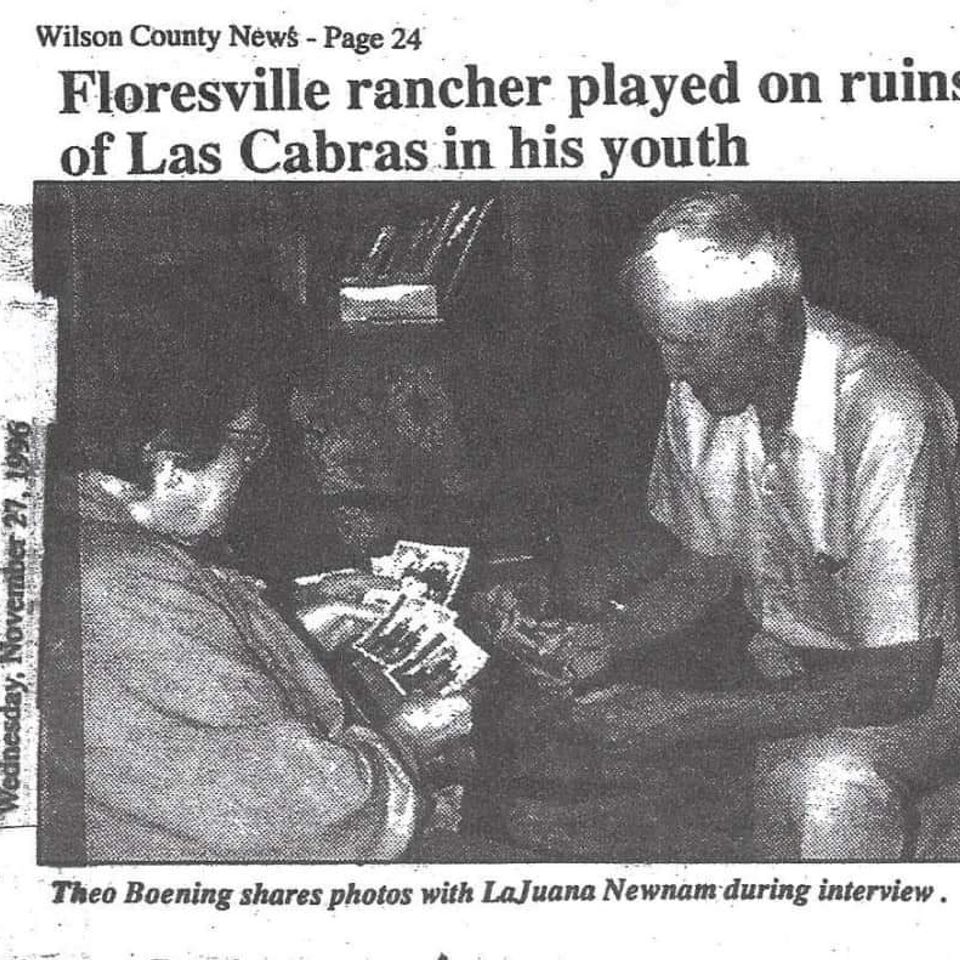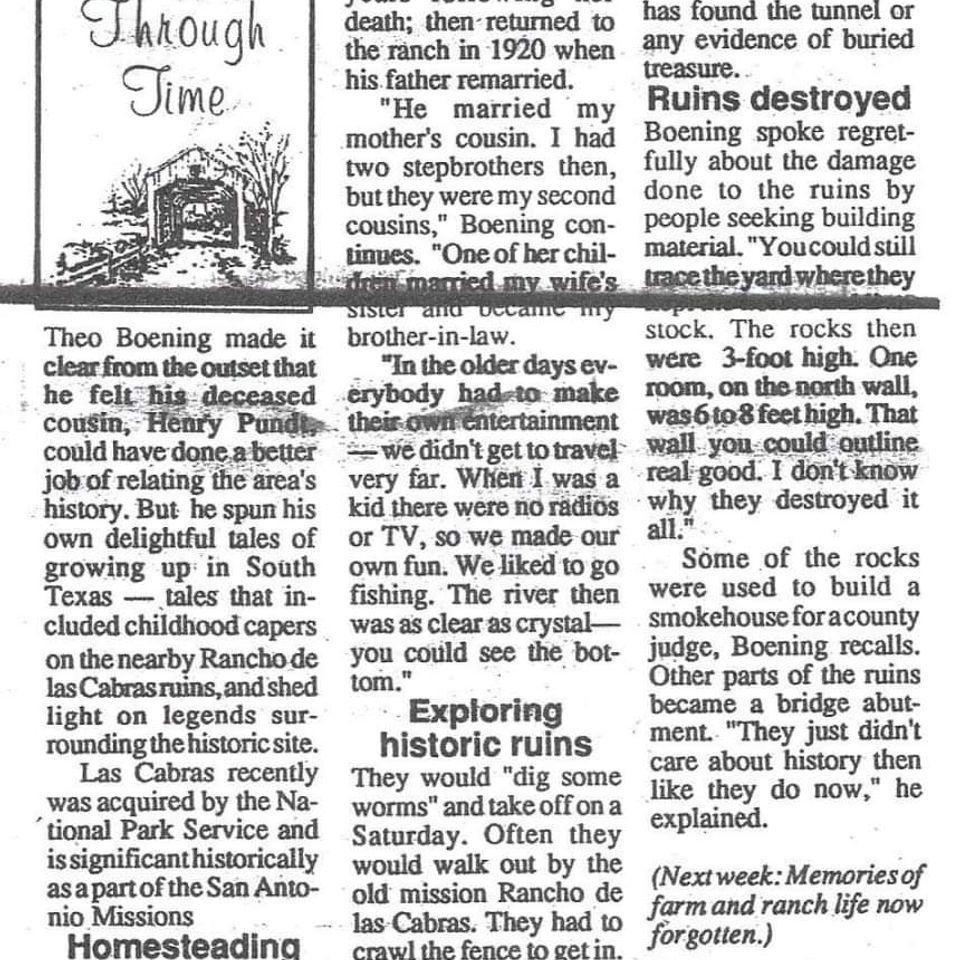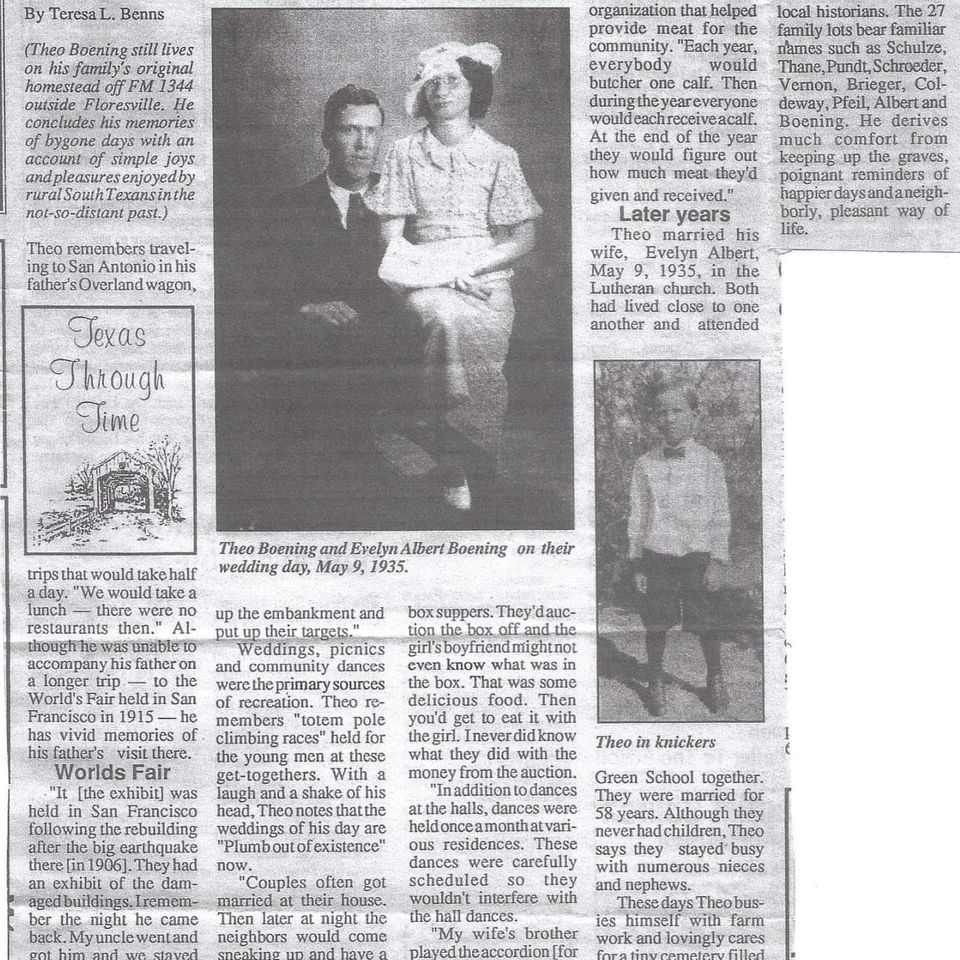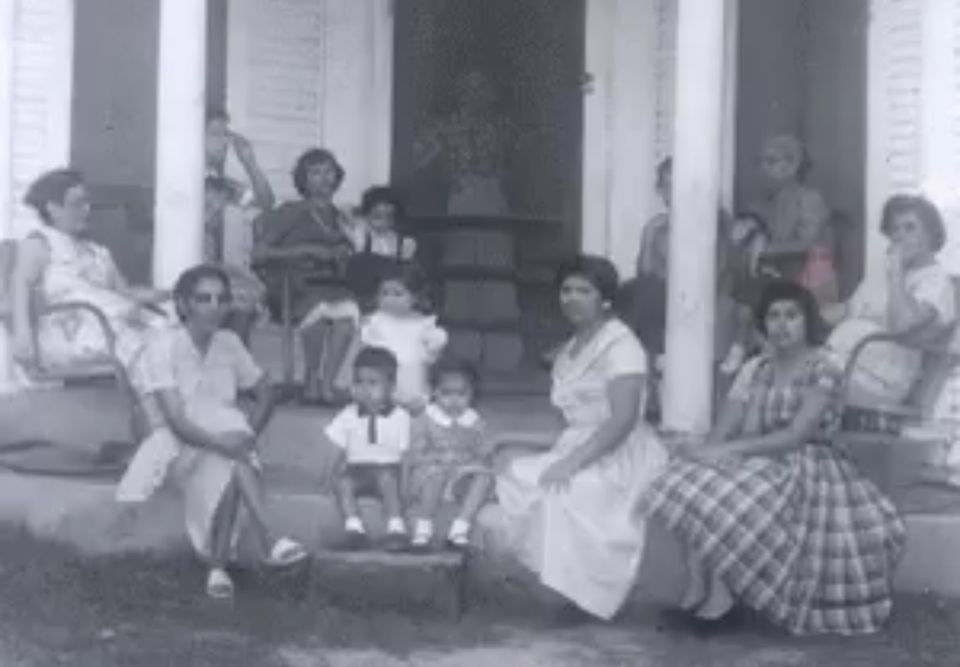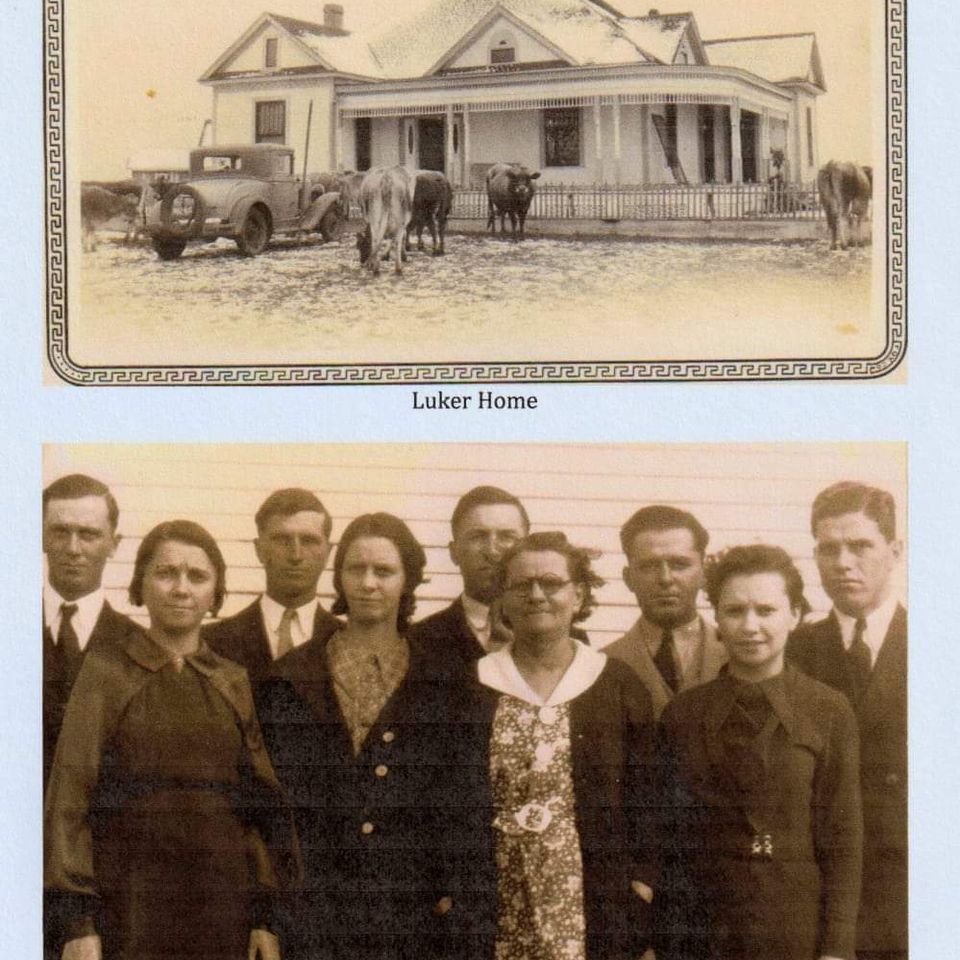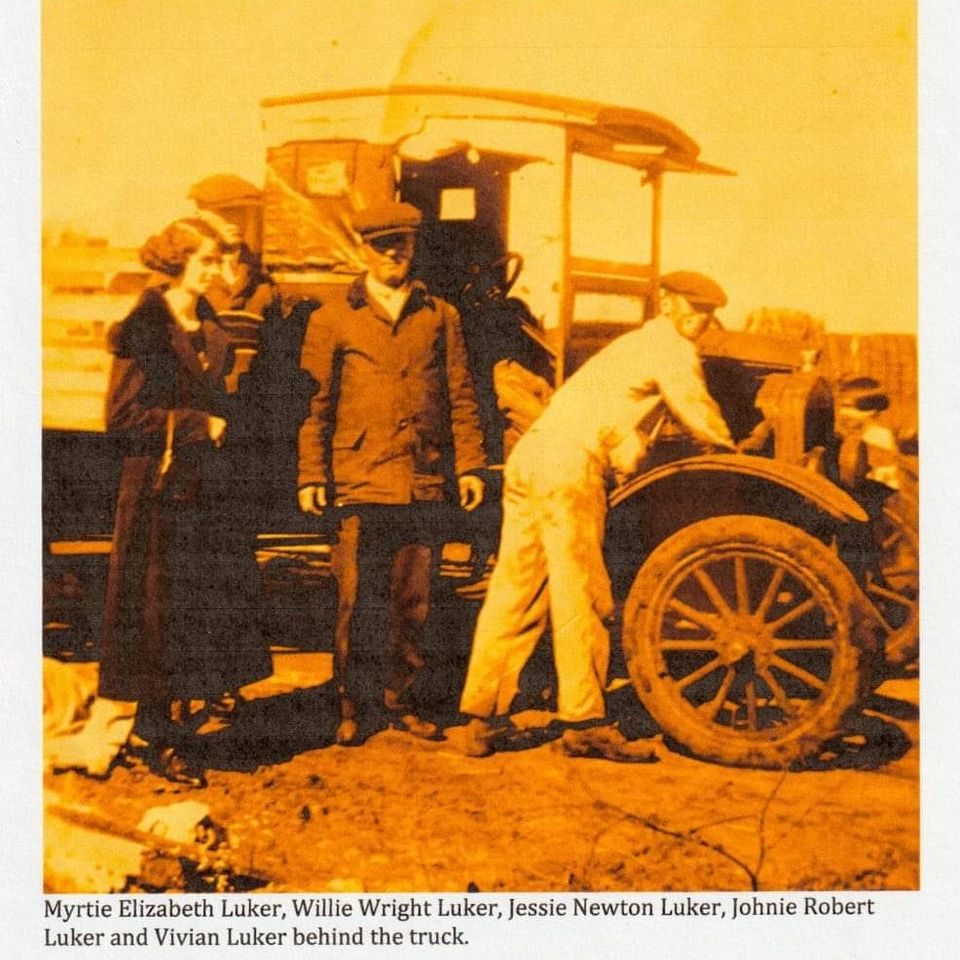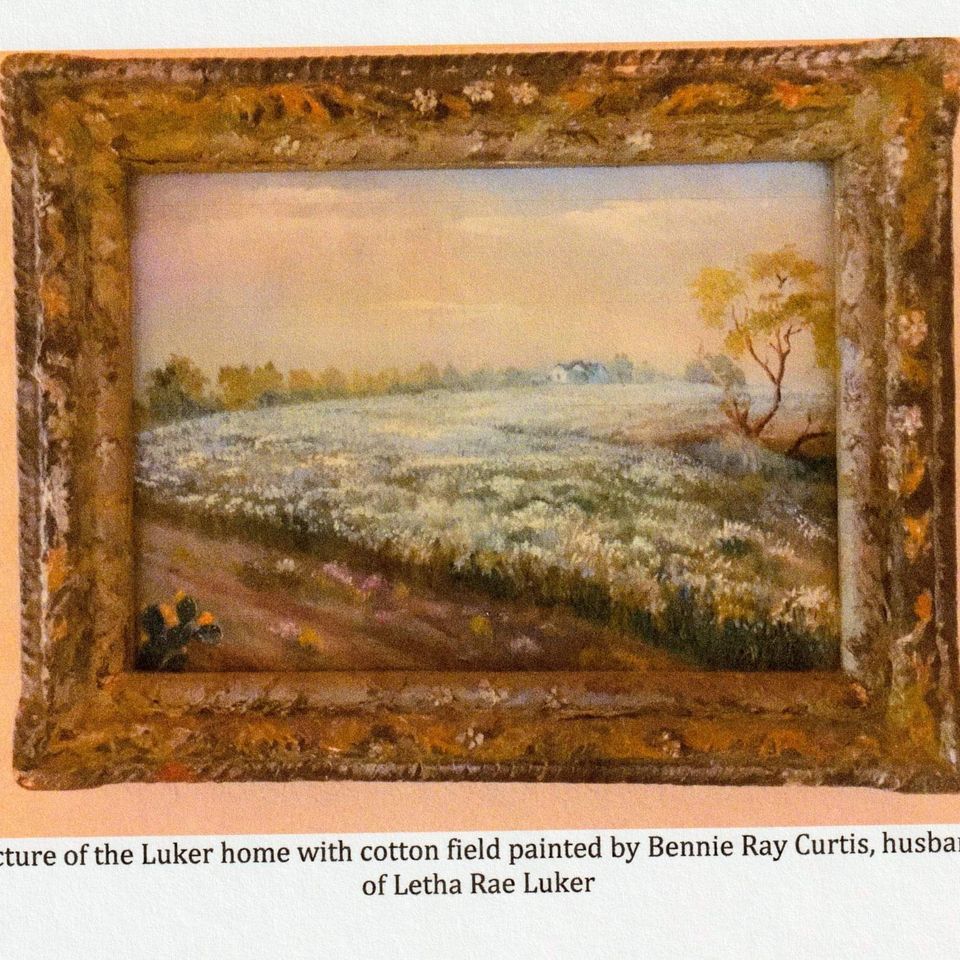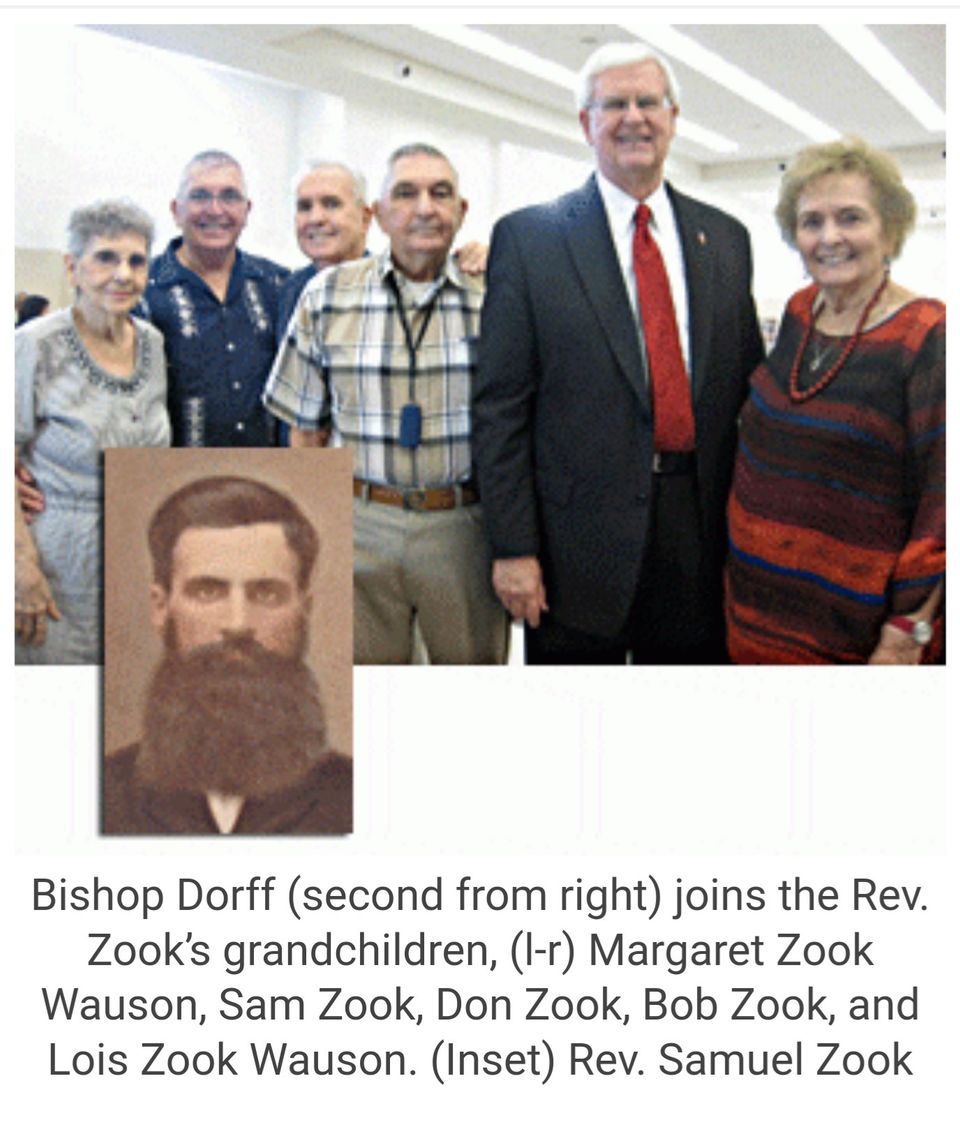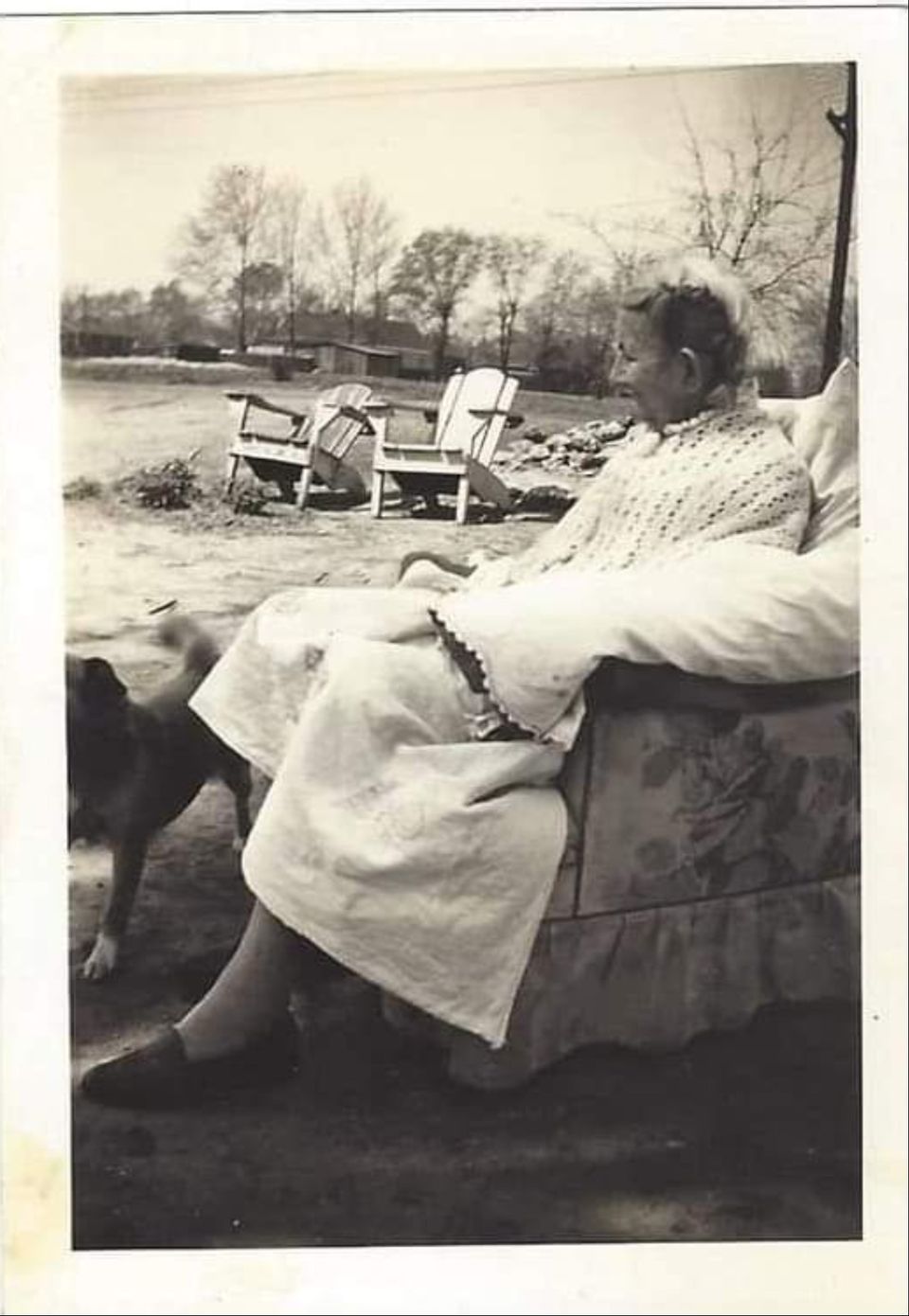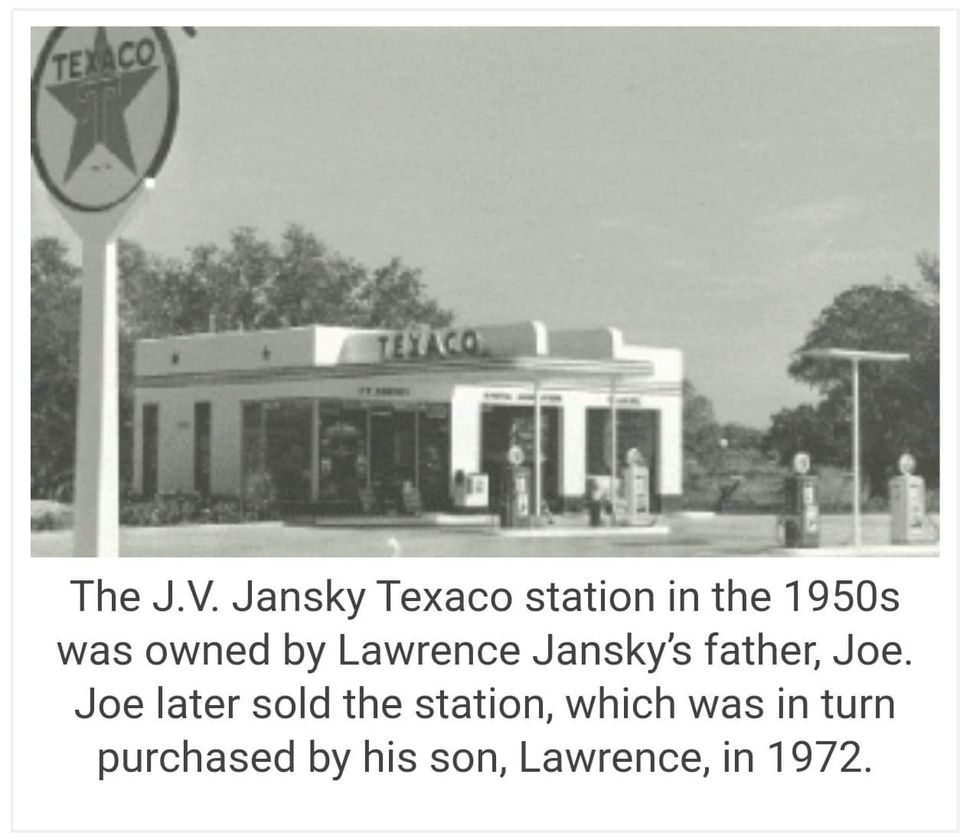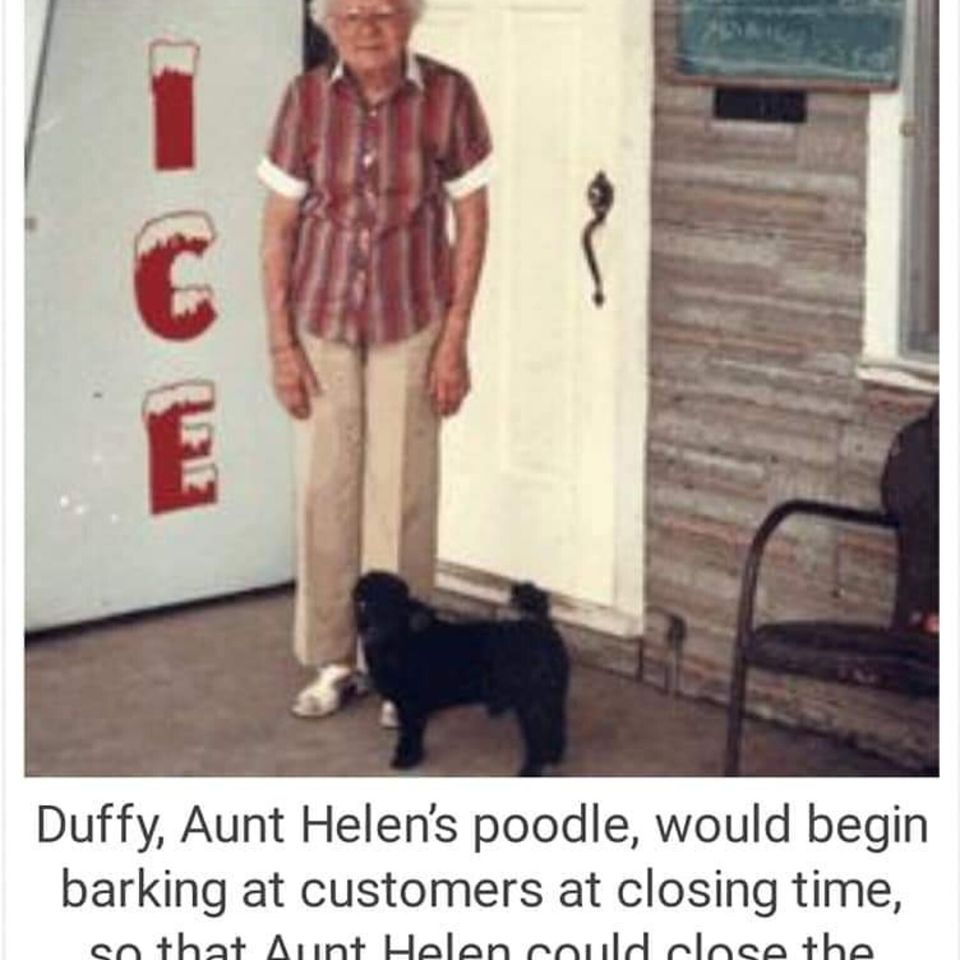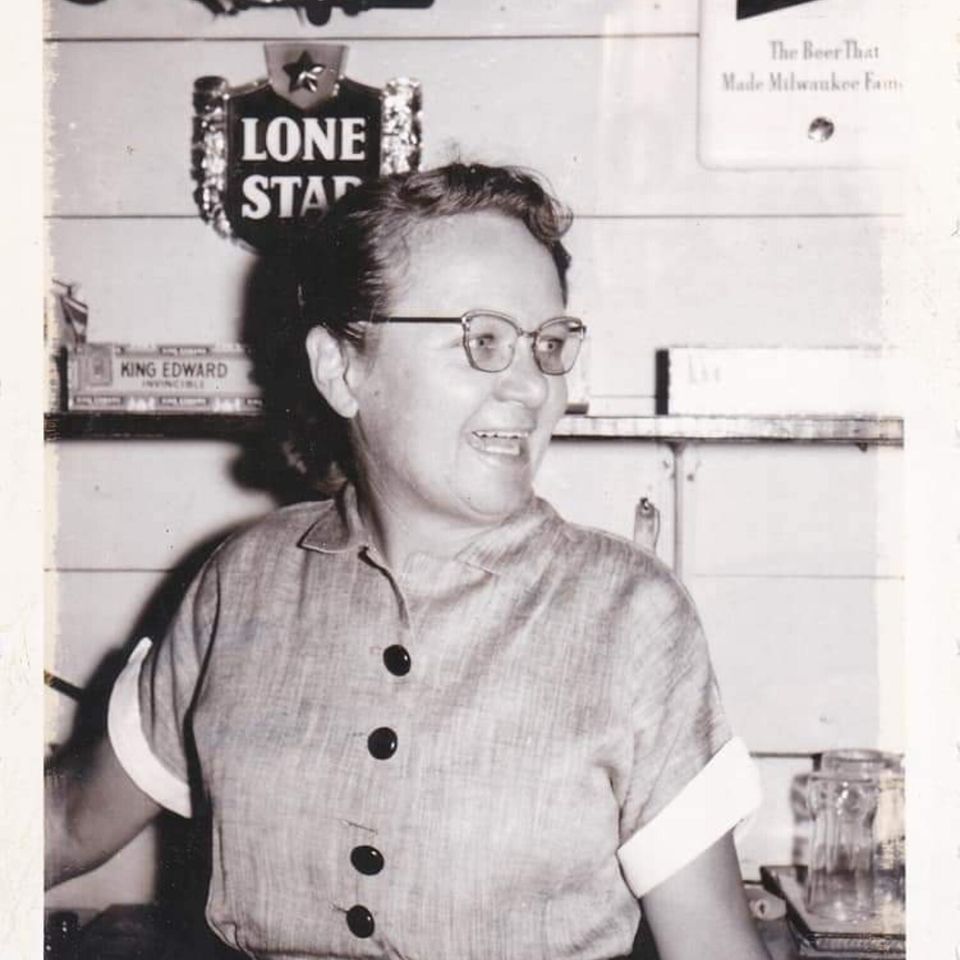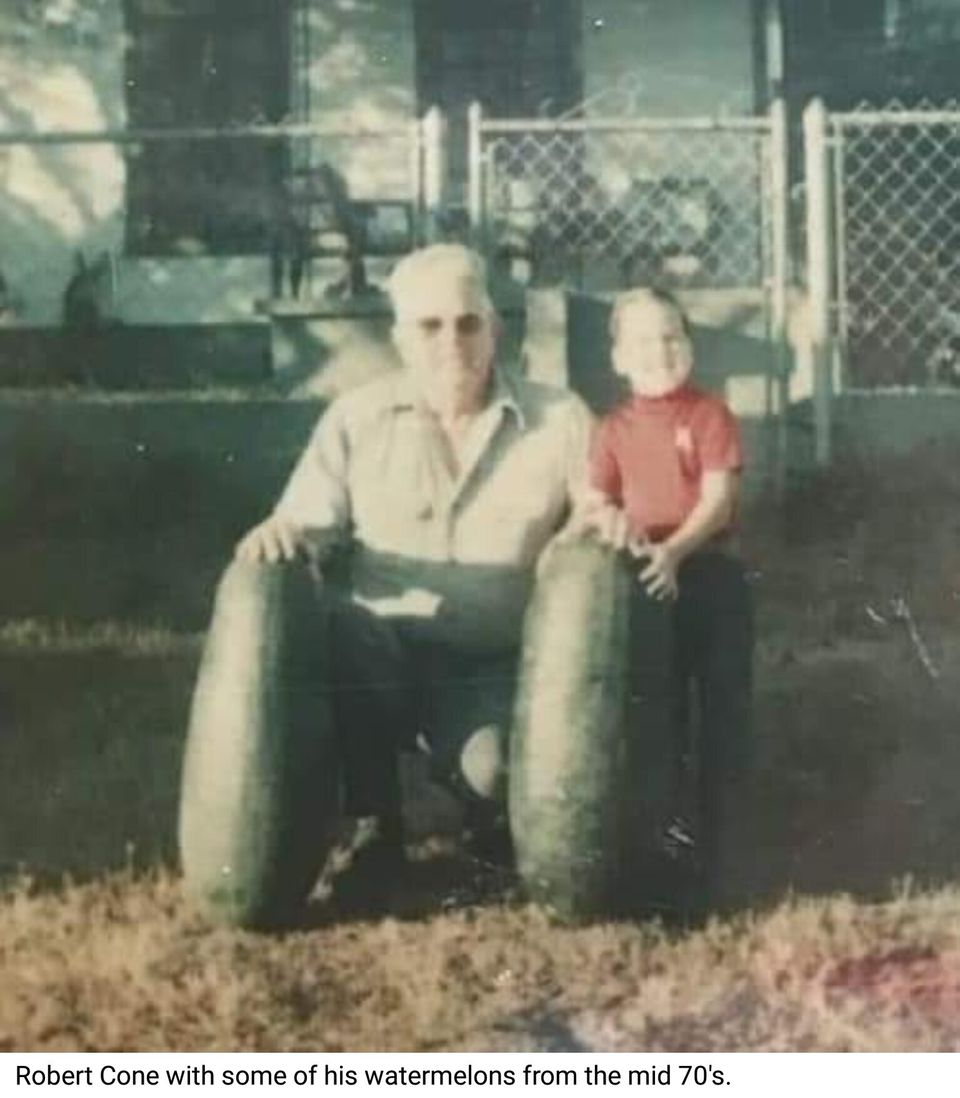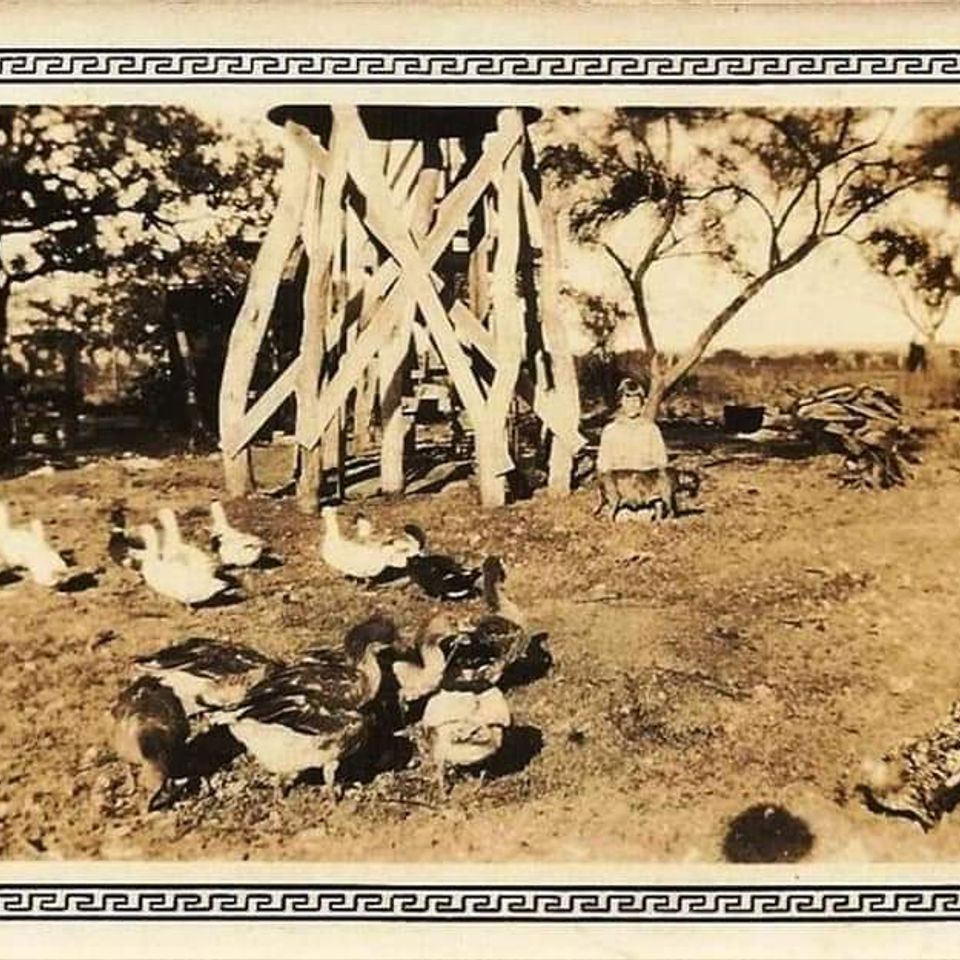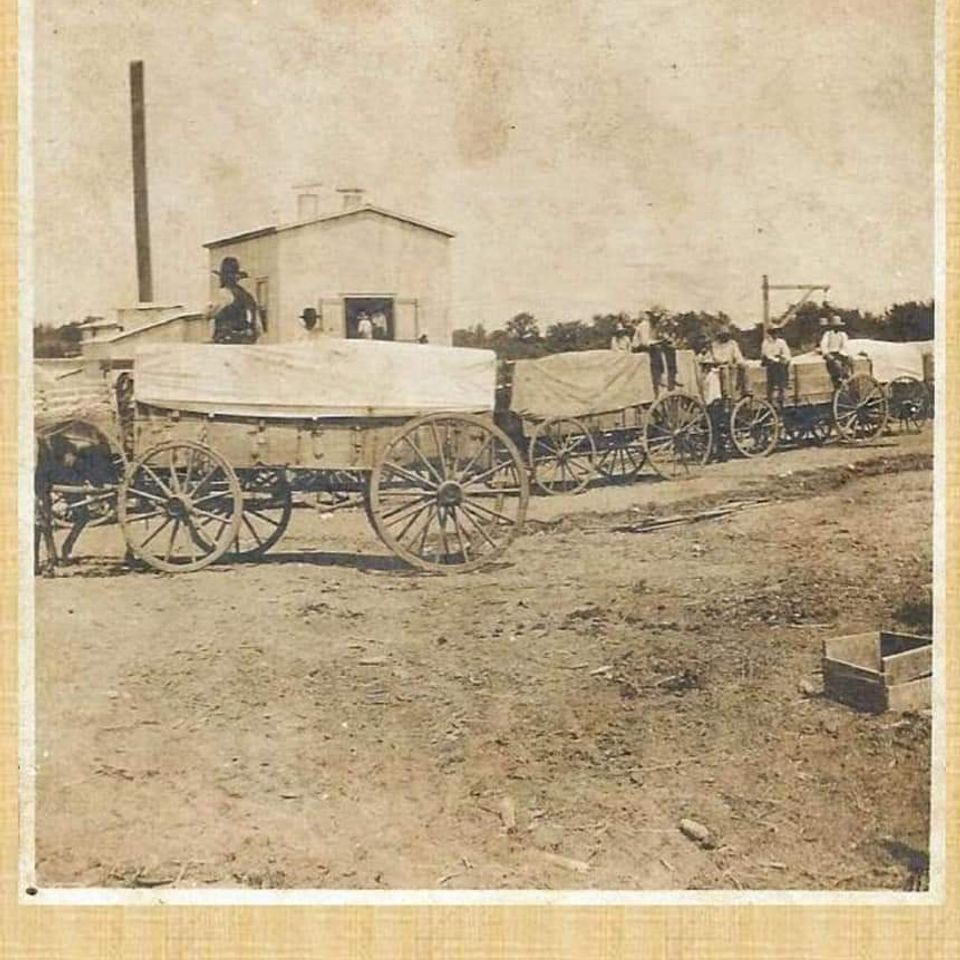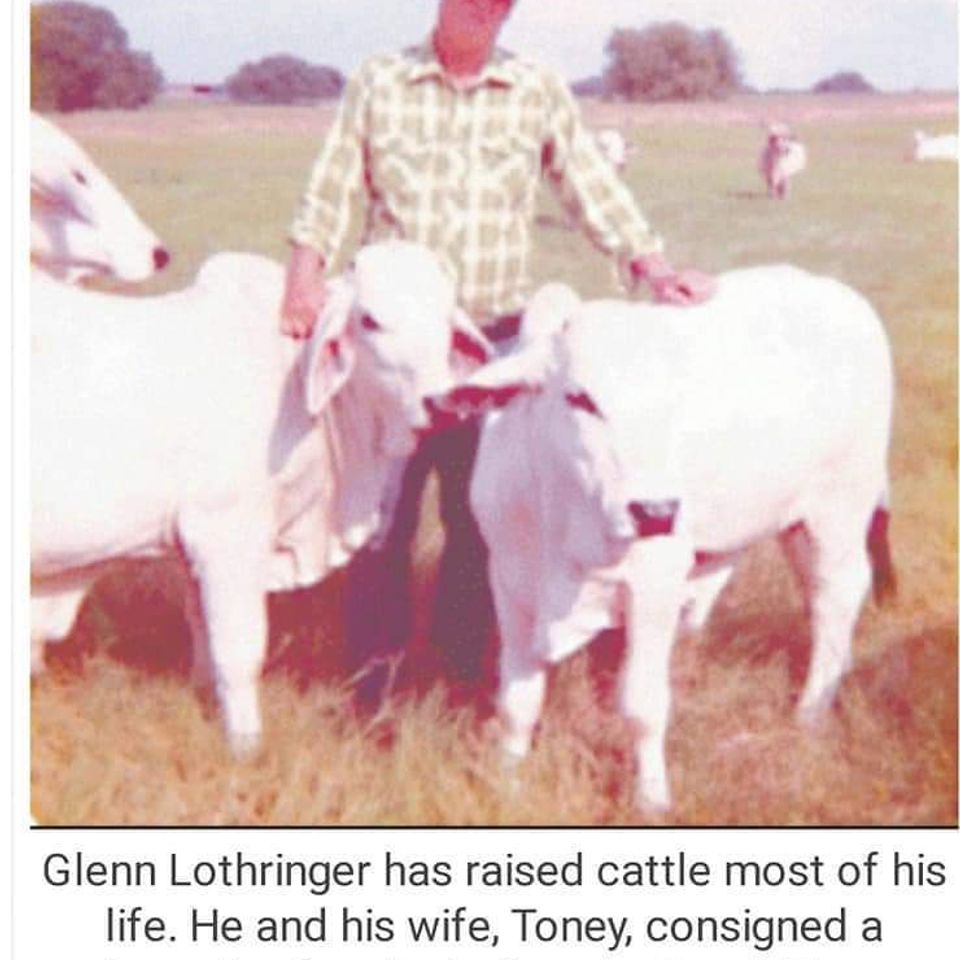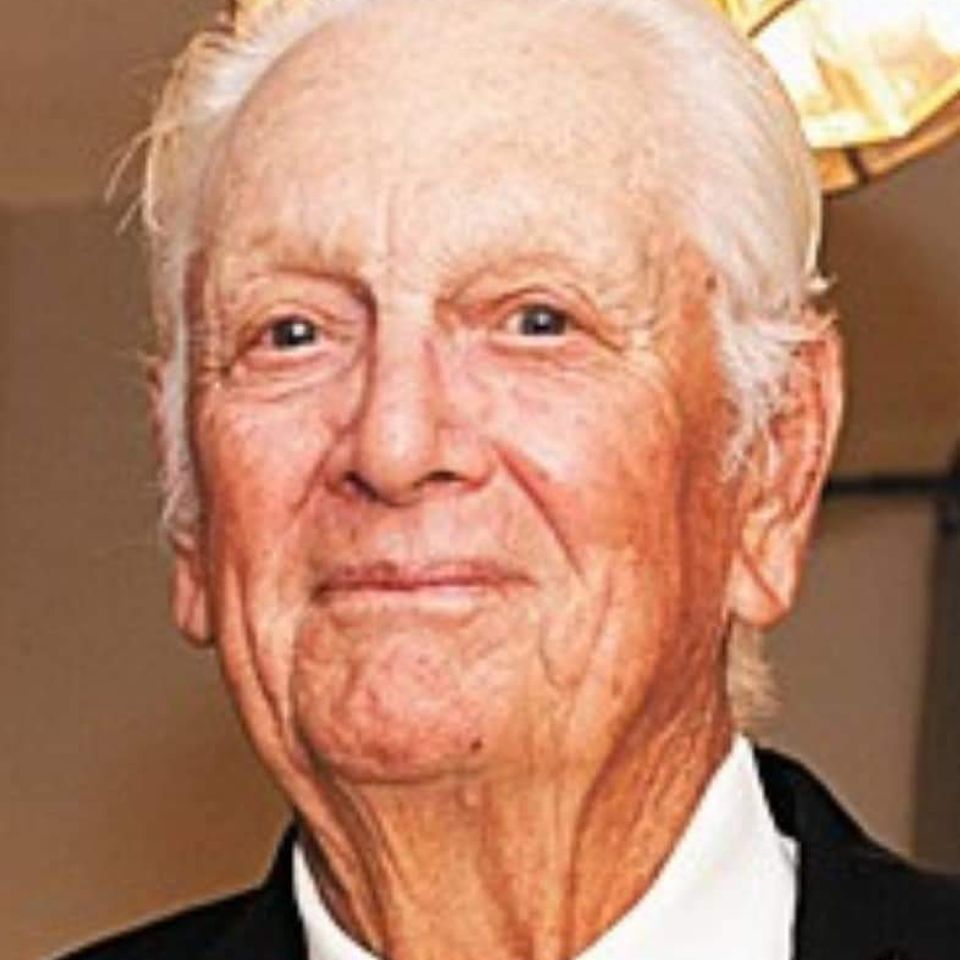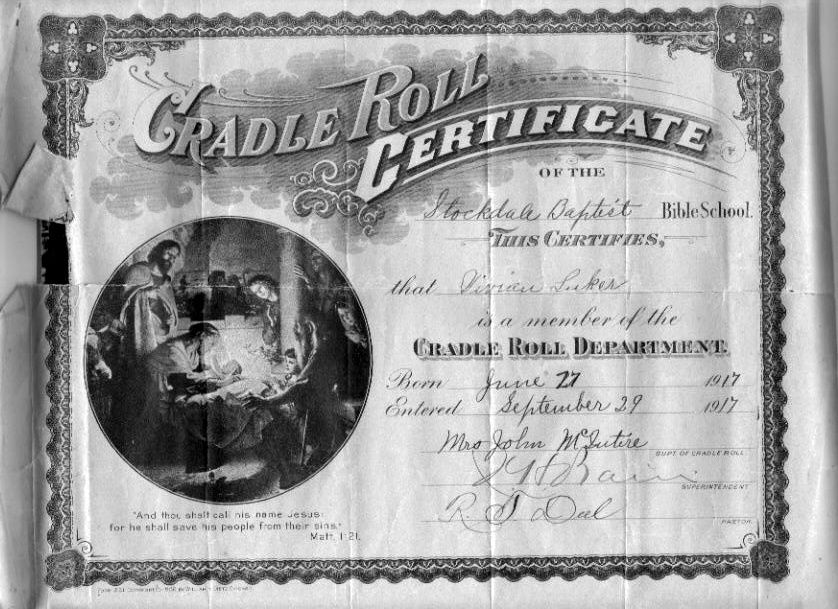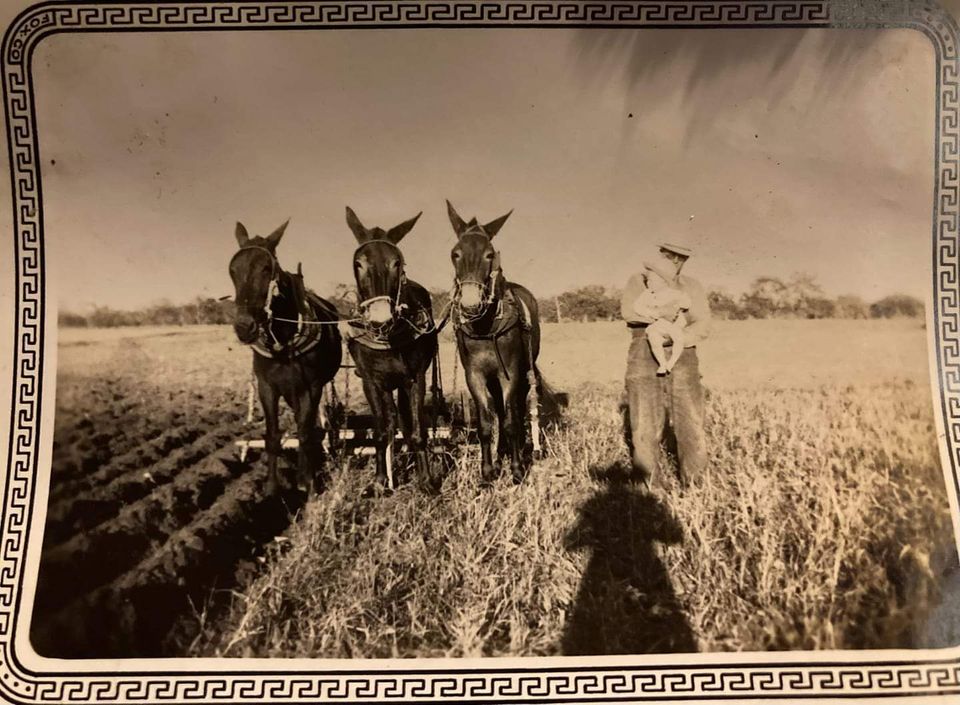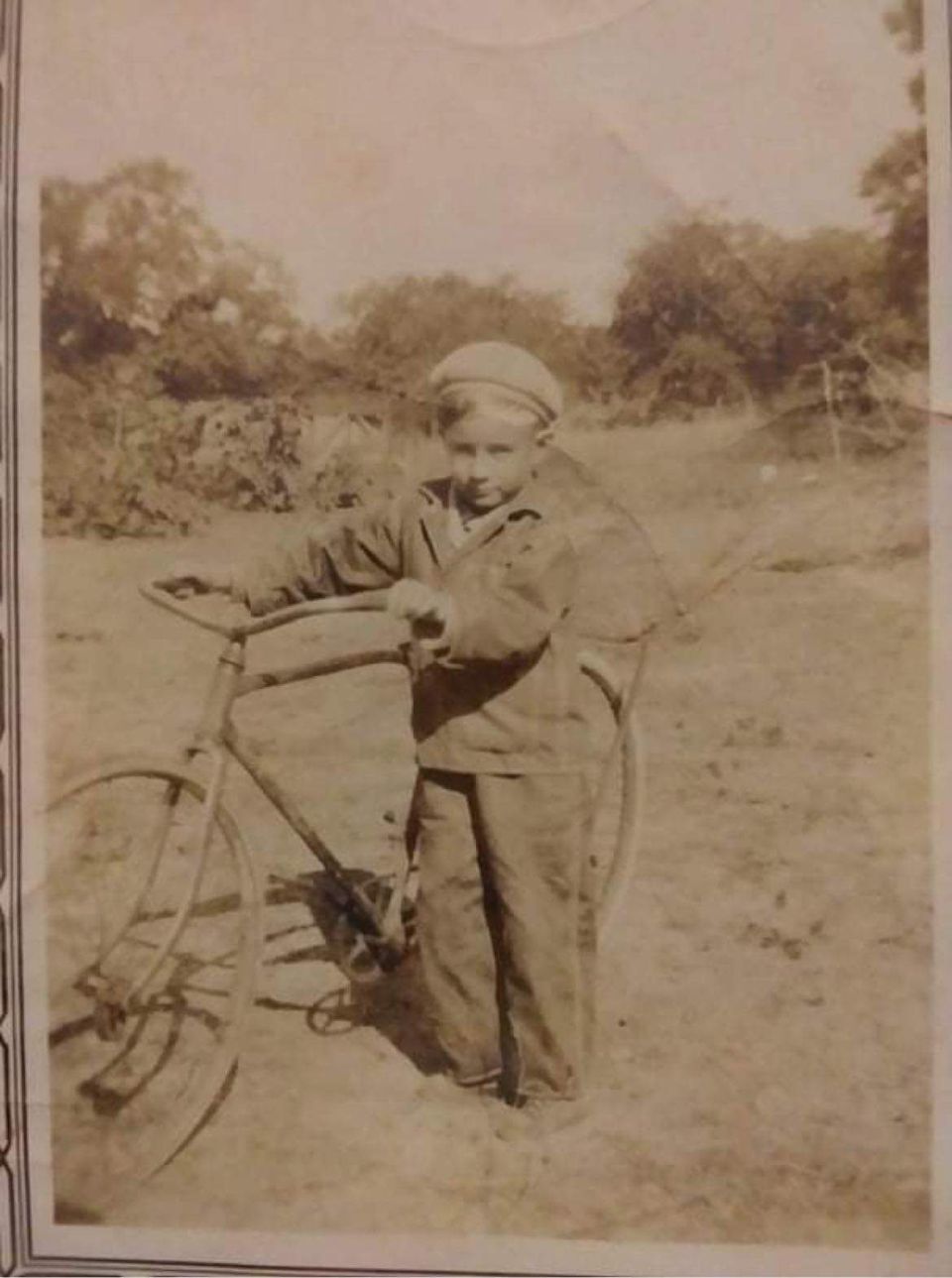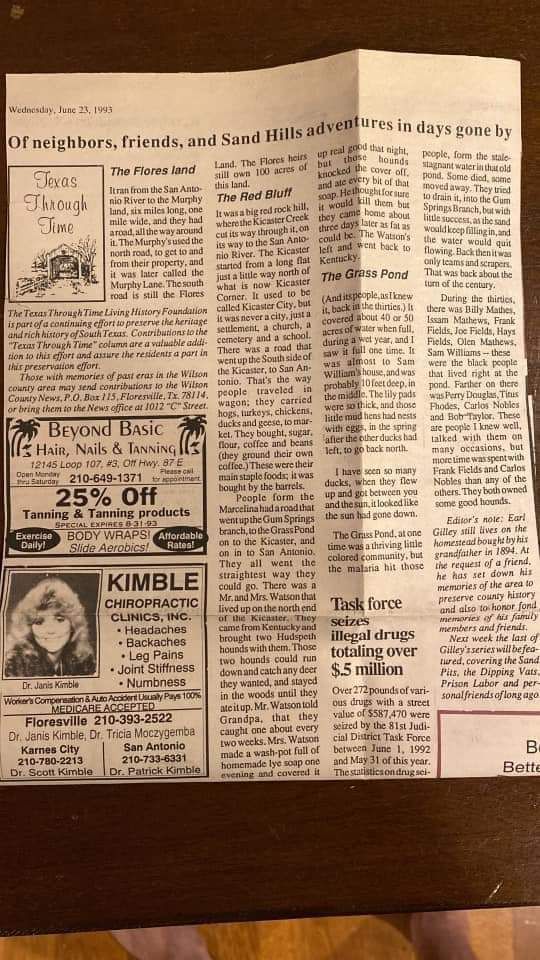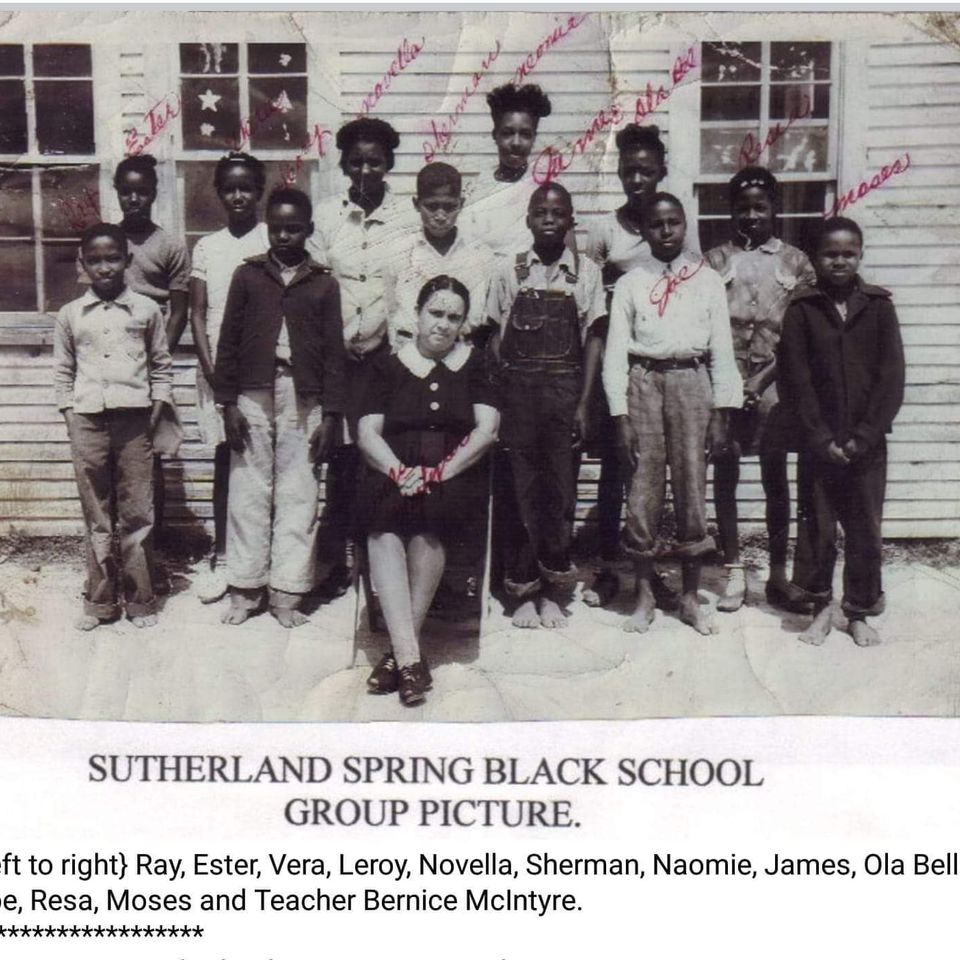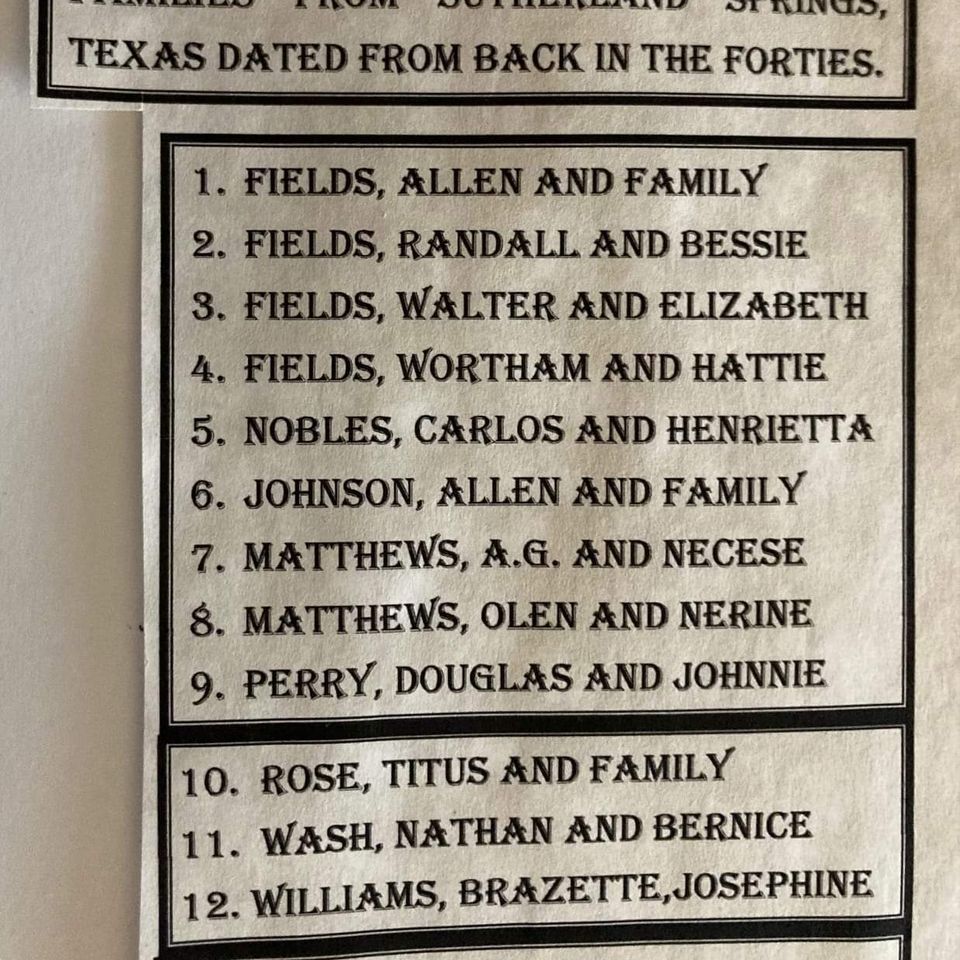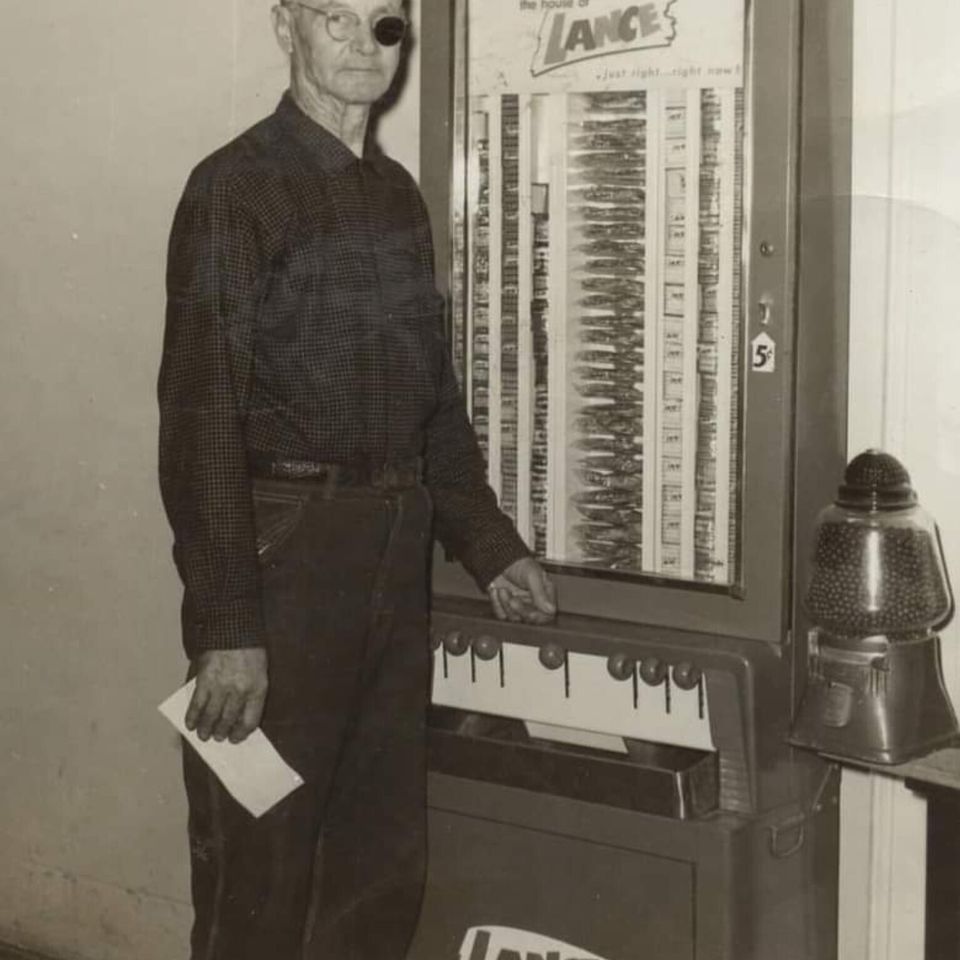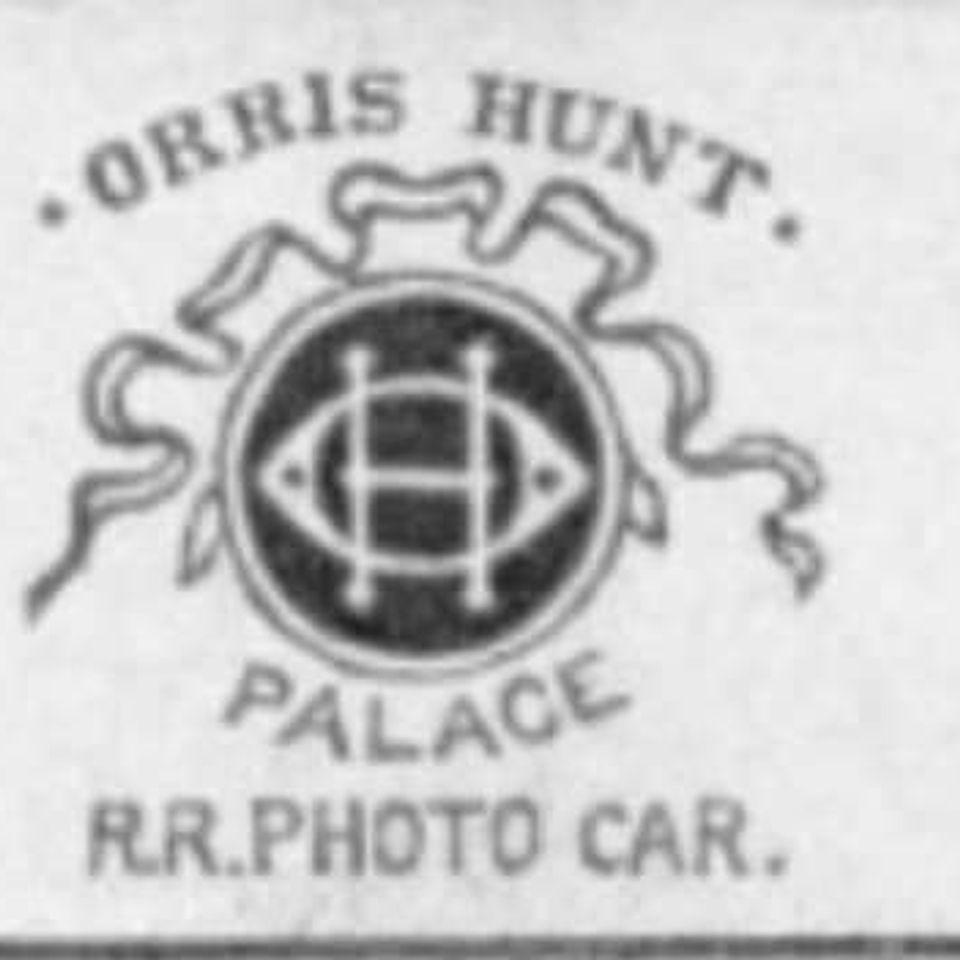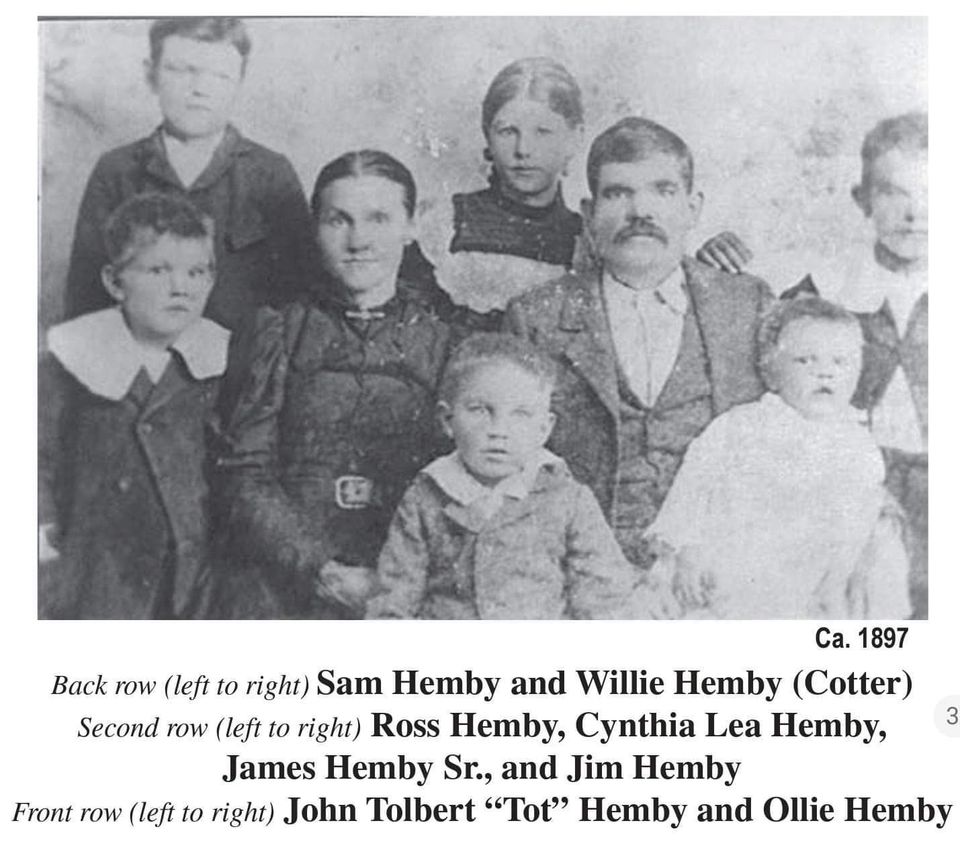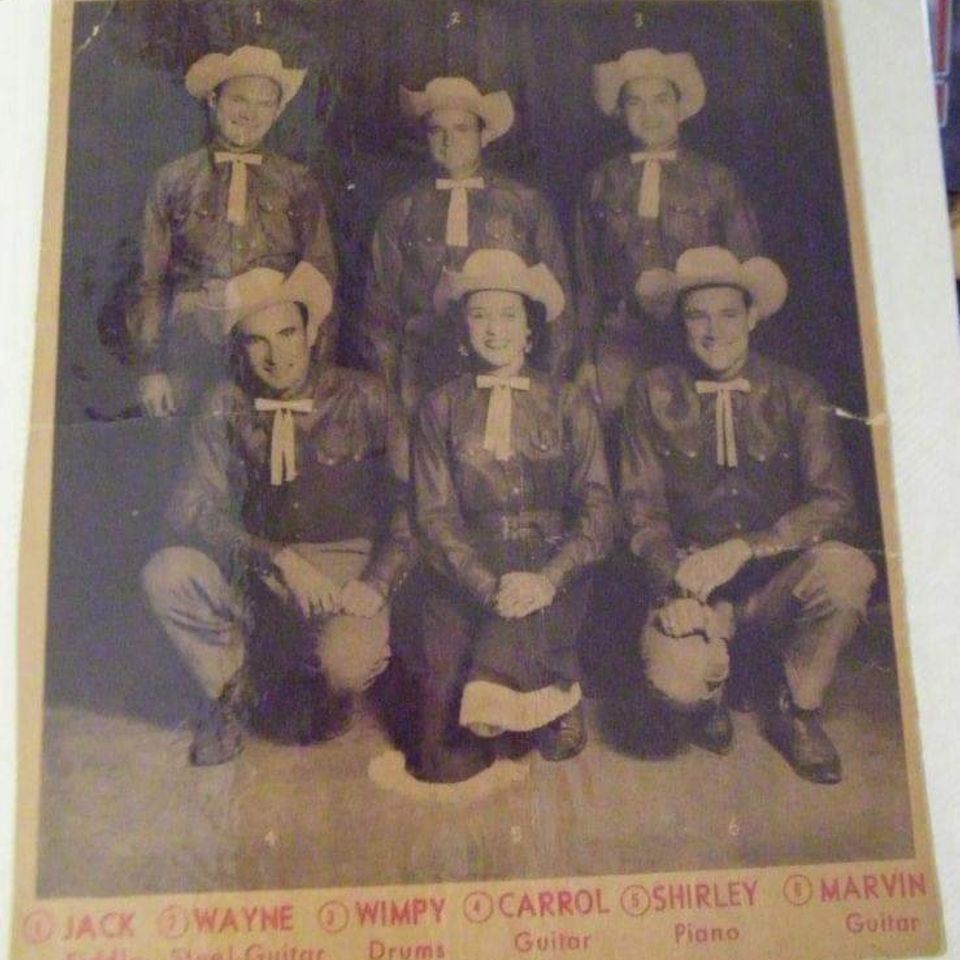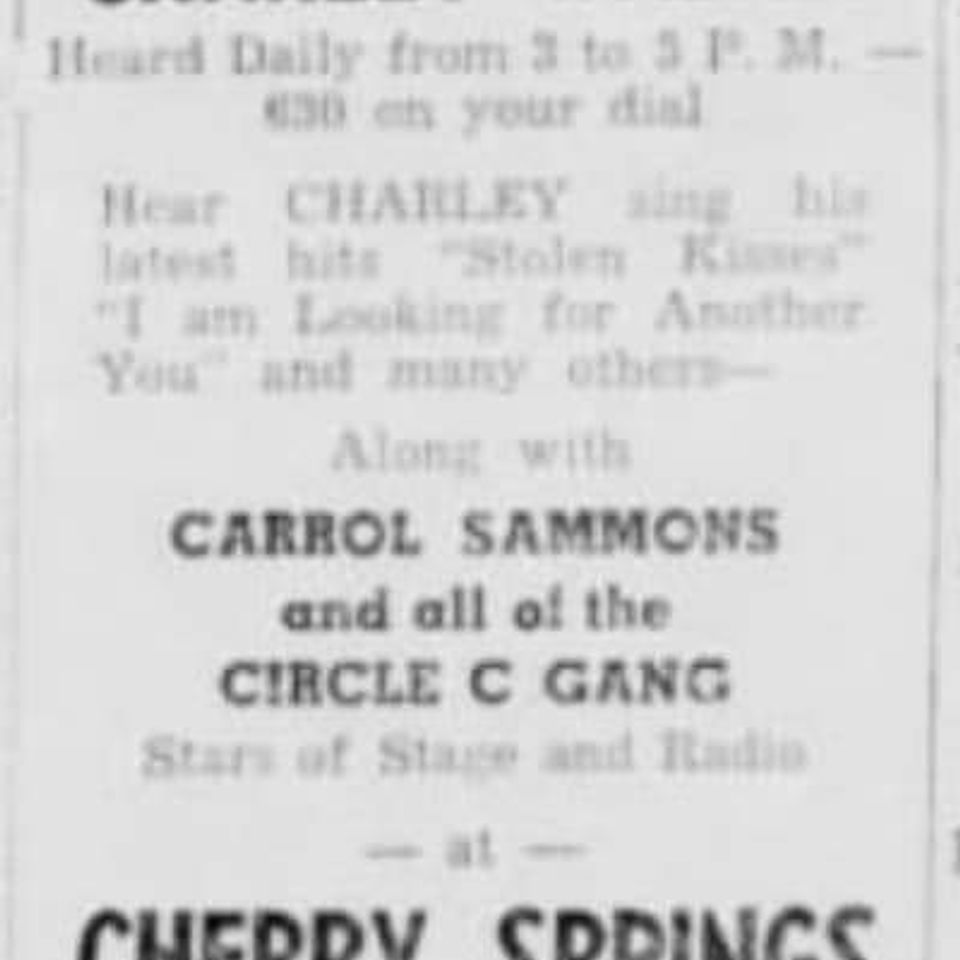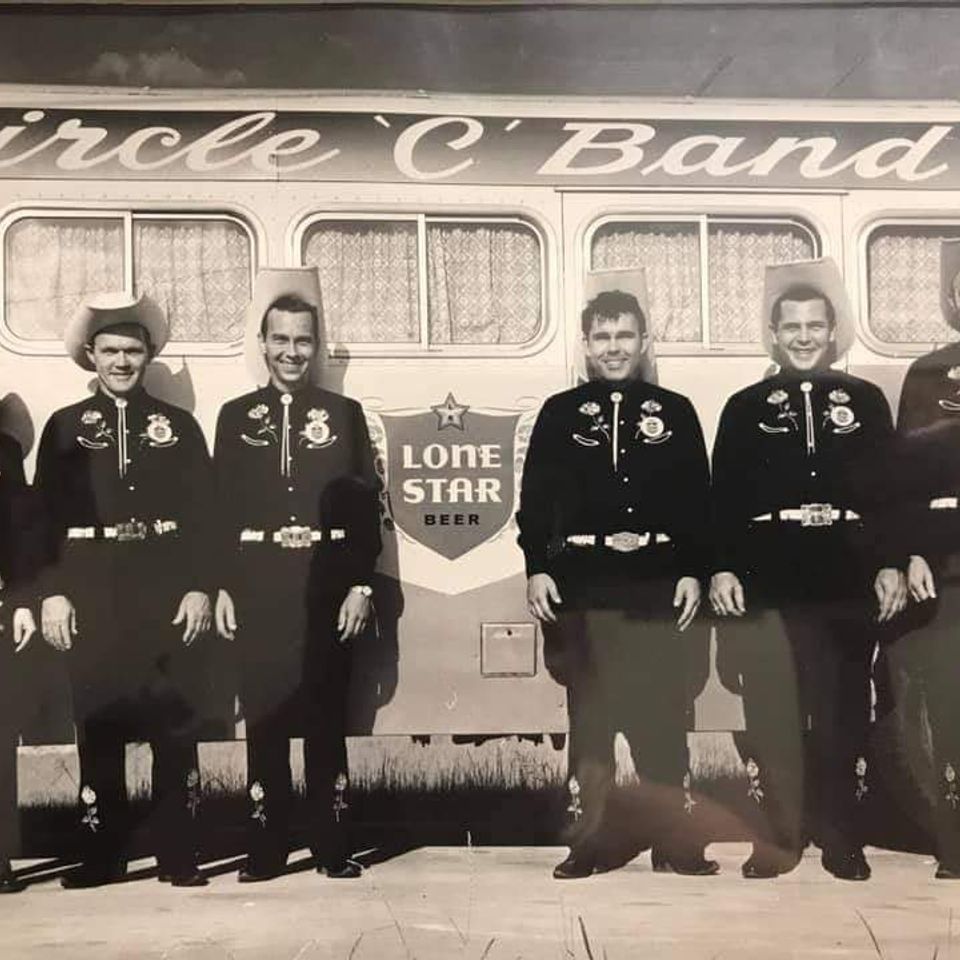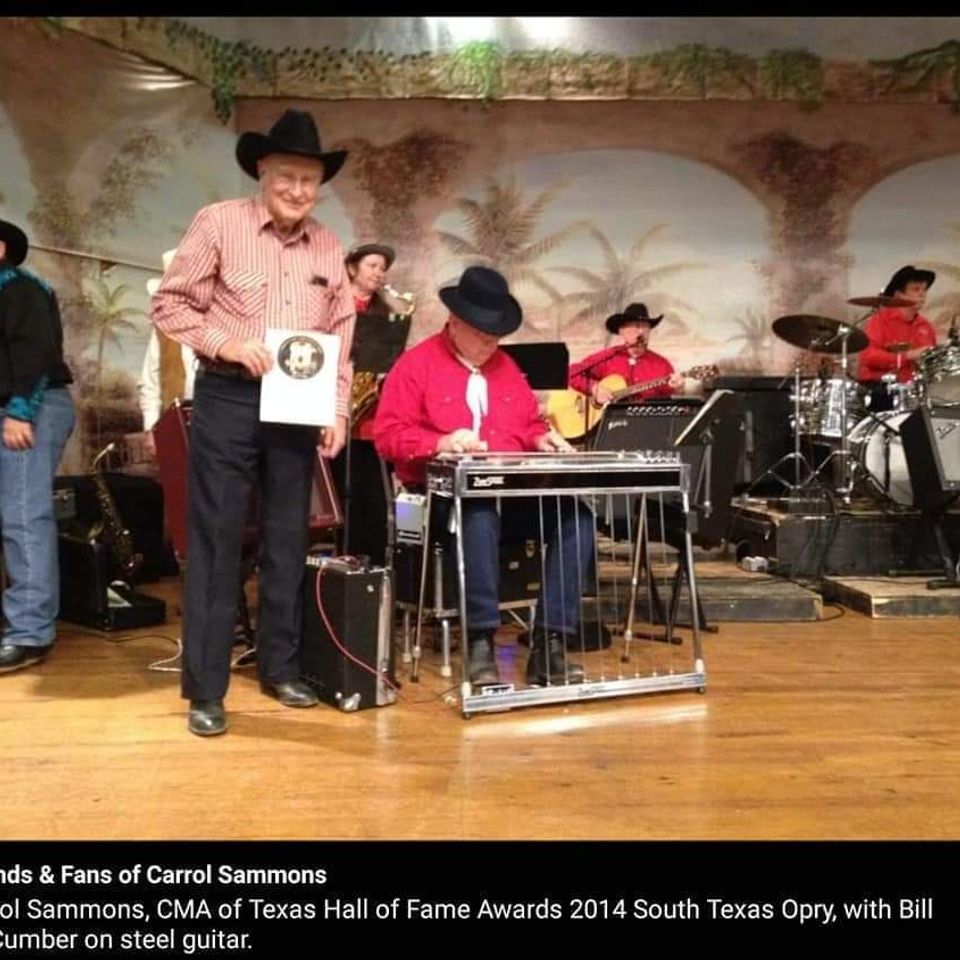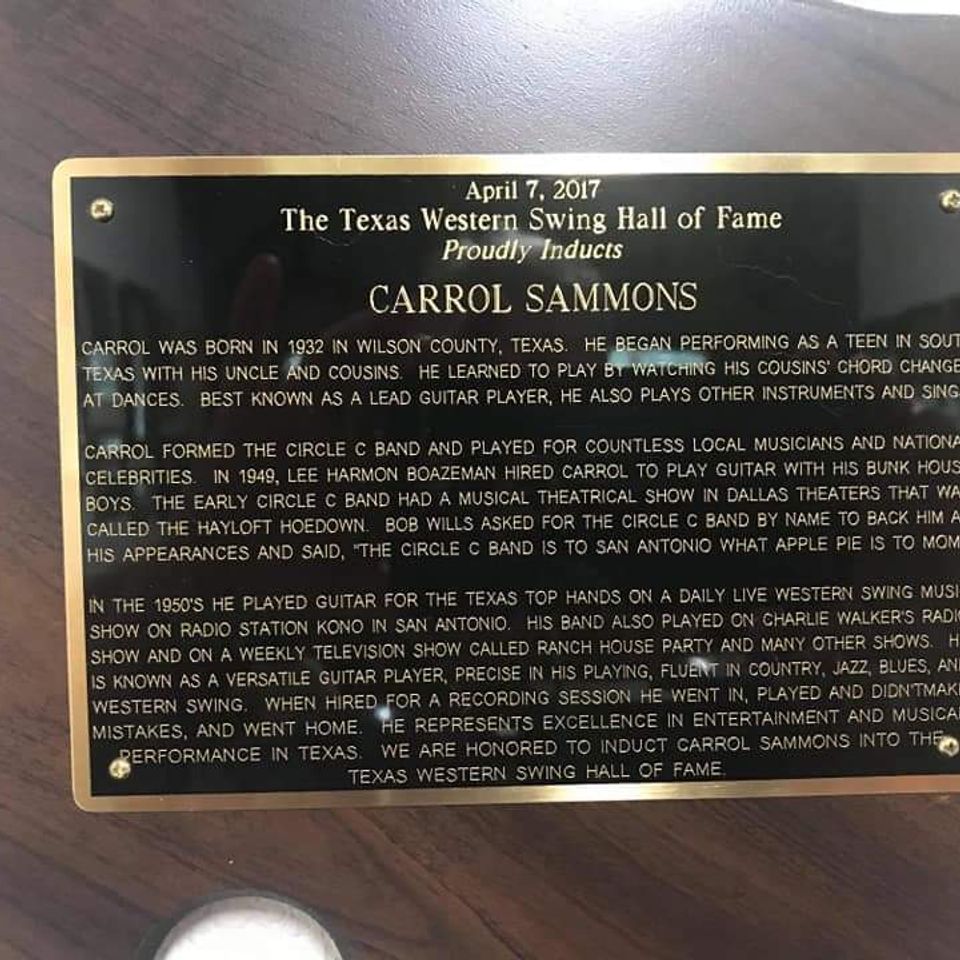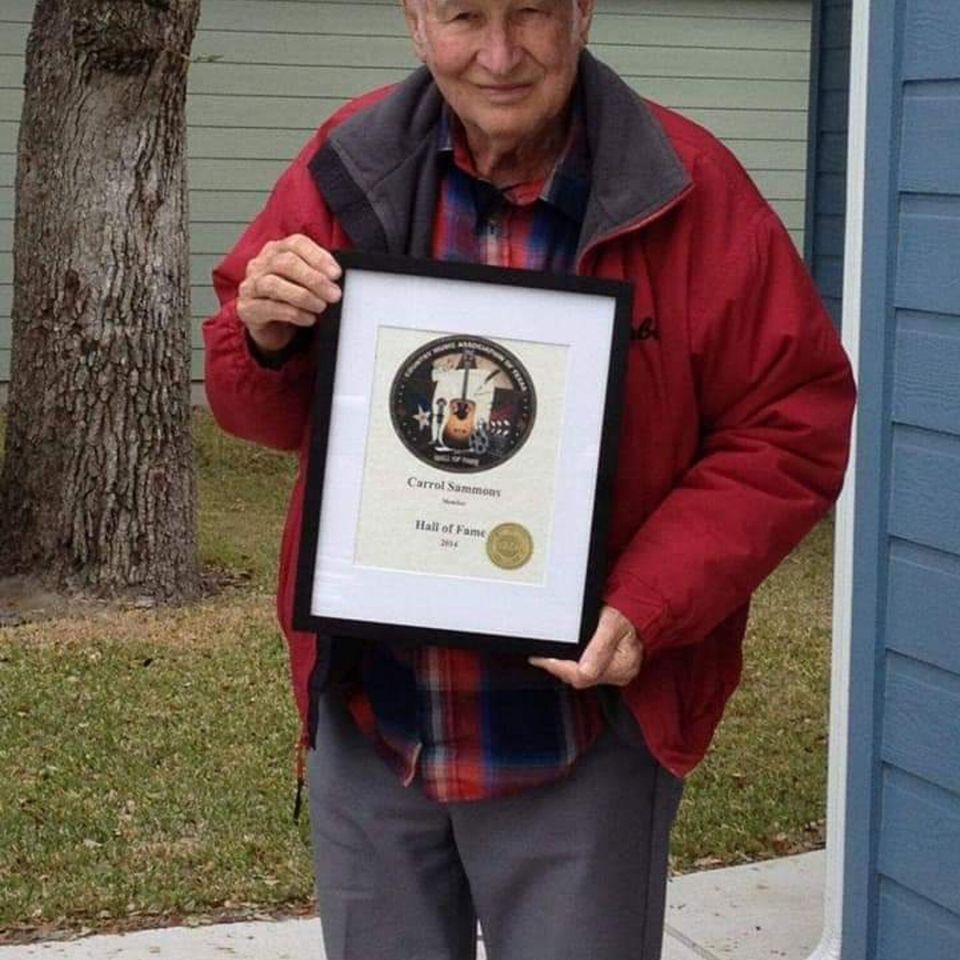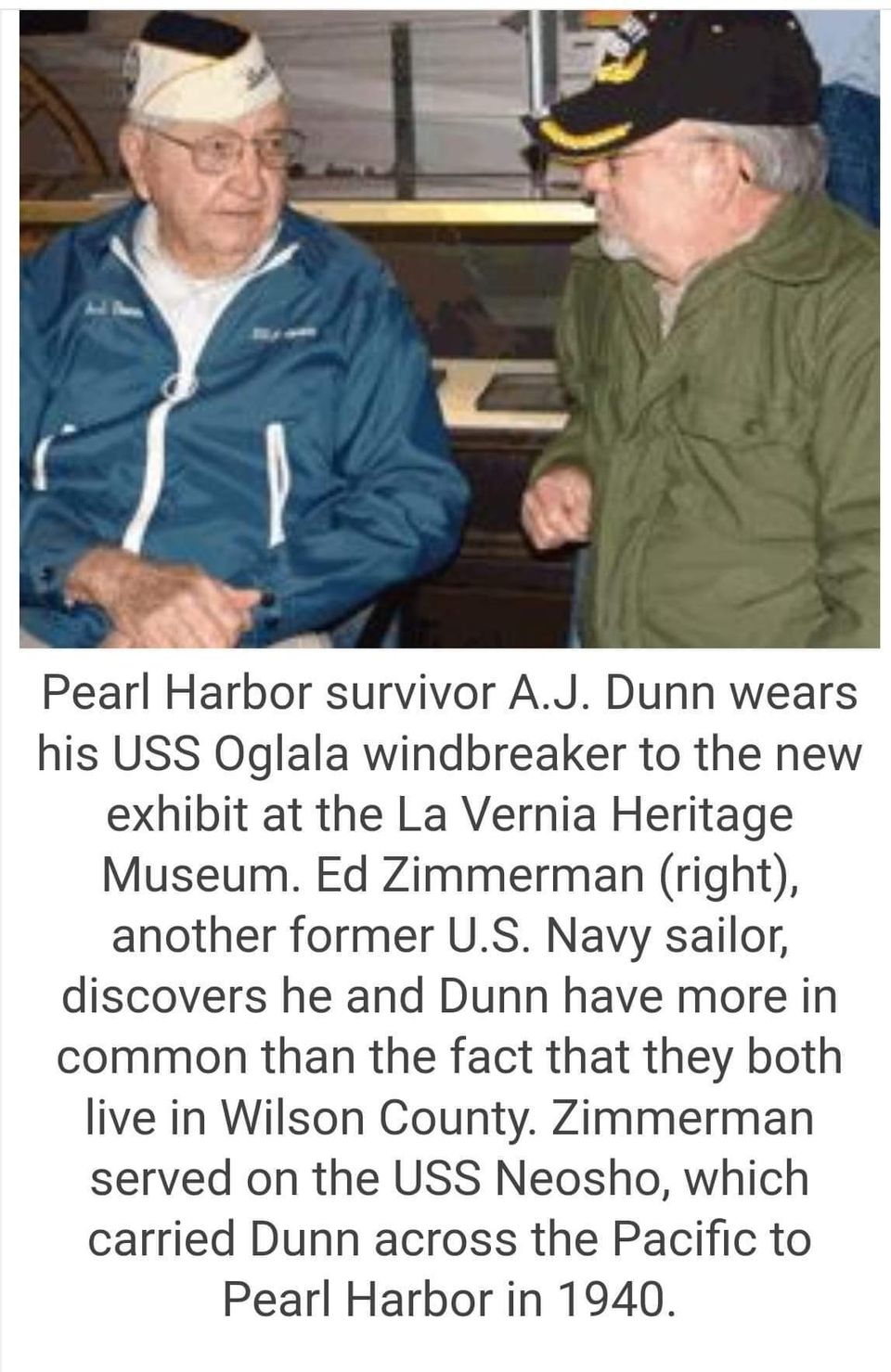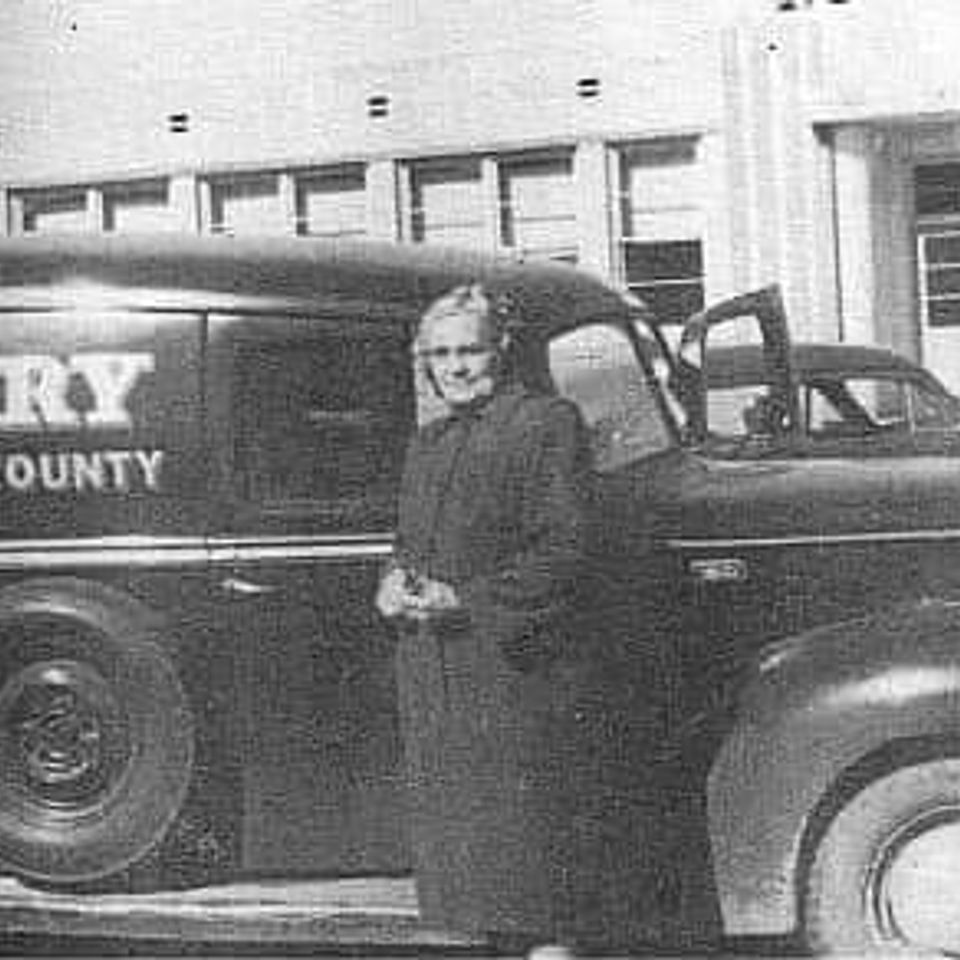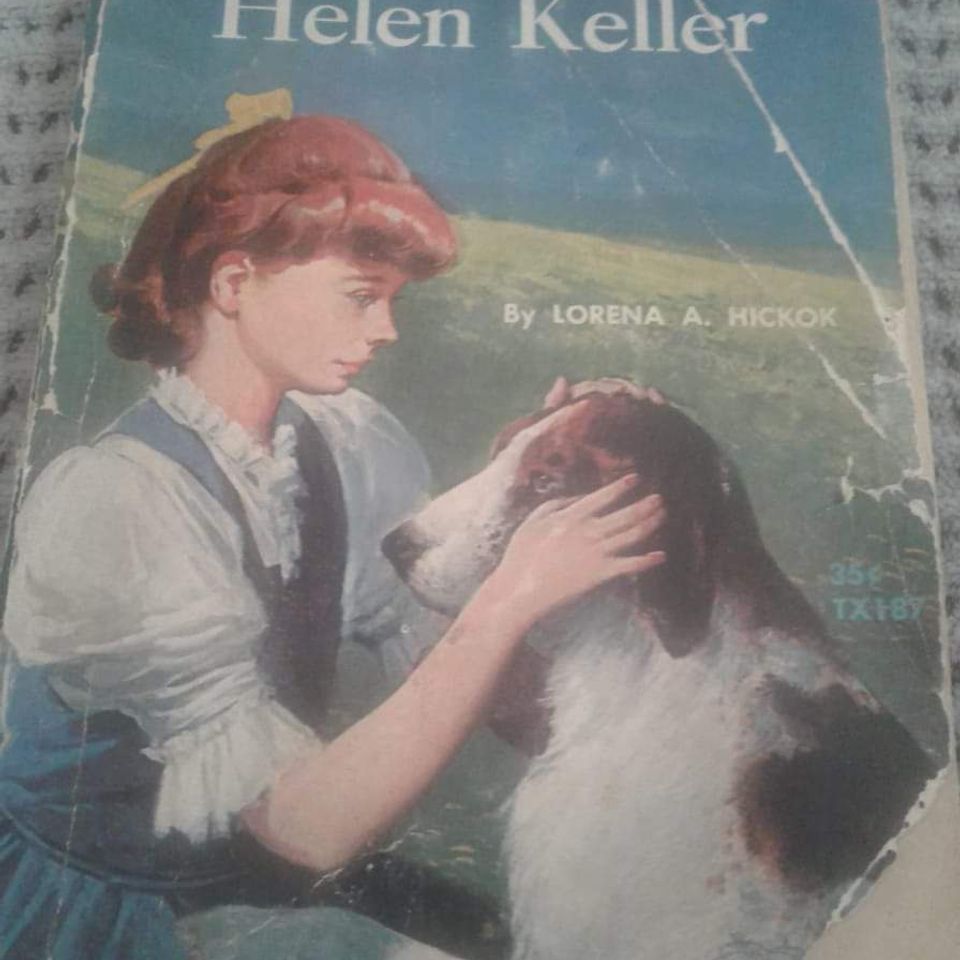Family unearths cistern beneath living room in historic home
Wilson County News, July 21, 2010
By Nannette Kilbey-Smith
Floresville – The circular saw blade whined as it cut through the floorboards of the Marshall home on South First Street. Kendle Marshall inched up the boards with the help of family friend Joseph Canady and gasped as daylight revealed what lay hidden beneath the century-old floor.By Nannette Kilbey-Smith
All eyes in the room were riveted to Kendle's movements. The view elicited a collective gasp of amazement and a quiet "Wow!"
"Kendle Marshall lowers a light into the hole under the living-room floor as family and friends peer into a 19th-century cistern hidden beneath the floor of their century-old house, built by Judge John E. Canfield in 1910."
One mystery was solved, but another had been revealed by lifting up the old floorboards.
Kendle and his wife, Maria, often had wondered, during the five years they had lived in the old Canfield/Williams house on South First Street, what caused the odd bump in the living room floor. As they prepared the grand old house for sale, they decided to resolve the bump and lay carpet in the living room.
They were unprepared for the sight that met their eyes the morning of June 15. When Kendle lifted the floorboards, a huge cistern was revealed.
Cisterns were common in the days before city water became common. Many homes had a small cistern to catch rainwater for household use. Sometimes, several households shared a large cistern.
The one beneath the Marshalls' home has been measured at 18.3 feet deep. Shaped like a giant amphora, the Marshalls said they have heard it called a bottleneck cistern. It may have been built by German craftsmen in the late 1800s.
"I can't believe we've been walking over it these past few years," Maria said.
Maurine Liles and LaJuana Newnam-Leus, members of the Wilson County Historical Society, were on hand for the revelation. Both were amazed at the find.
Liles speculated that former Wilson County Judge John E. Canfield, who built the house in 1910, had it placed over the cistern to make it easier to provide indoor plumbing. Canfield's daughter, Kathleen, married Dr. Silas Williams. She lived in the house until she moved into a nursing home when she was in her 90s, Liles said. That was the end of one era and the beginning of another in the home's history.
The Marshalls moved to the area after living in California. Kendle and Maria had purchased property in Eagle Creek after visiting San Antonio on their honeymoon. They decided that, one day, they'd live here.
That day came four children and several careers later. Kendle was a high school history teacher, then an officer with the Long Beach, Calif., police department. Maria worked in real estate. Together, the two had been buying, rehabbing, and flipping houses. They had also owned several Thomas Kinkade galleries.
Kendle retired from the police department and they decided to move to Texas. Among his retirement gifts were a double-barreled shotgun and a riding mower.
"The guys figured I'd need them," Kendle said with a laugh.
The family bought a home outside Floresville and settled into their new lives, attending church and school, and rehabbing houses to sell. Maria opened and operated the Coffee & Creamery ice cream shop next to H-E-B for a short time.
They passed the Canfield house each Sunday on their way to church. One day, seeing people come out of the house, they stopped and discovered that Kathleen Williams' heirs were preparing for an estate sale.
On a whim, Maria asked if the house was for sale. Before they knew it, the Marshalls were the proud owners of a historic Floresville home.
Inside, "it was dated, but livable," Maria said. Outside, however, was a different story.
"It was like a jungle," Kendle said. Plants and shrubs hadn't been trimmed or cared for in some time.
Undaunted, the Marshalls set to work, taming the overgrown yard and settling into their new home. Over time, they became acquainted with some of the historic building's other occupants.
"We have a ghost cat," Cambria, 7, whispered.
"Our aunt said a striped cat slept next to her [in the guest bedroom] and we don't have a striped cat," added her older brother, Dawson, 11.
"Our grandma's afraid when she comes, because she stays in the 'ghost room,'" Colton, the oldest at 12, said. He said there's another ghost in the upstairs of the carriage house that sits behind their home.
Cambria likes the spookiness of the house. Her big sister, Carmella, 9 this month, agreed.
"I love the ghost cat!" she said.
Maria said they've found a few artifacts, such as a porcelain inkwell, a china doll, and other small items, while working on the house.
Now they're preparing to sell the house and move back to California. They have enjoyed living in the house and being surrounded by so much history, both at home and nearby, Maria said.
"I'm going to miss living so close to the Alamo," Colton said.
The Marshalls, avid fans of the Old West, have visited many Texas historical sites, including the Alamo, Goliad, San Jacinto, and Washington-on-the-Brazos, Kendle said.
They're going to miss the local history and their spacious home, with its quaint nooks and ethereal occupants.
Kendle is placing Plexiglass over the cistern, with a movable carpeted panel, so the new owners can marvel about the home's recently discovered oddity.
"The most fun has been the history of it," Maria said. "You couldn't build this house today if you wanted to, with all the craftsmanship. It's survived a lot. This house has a lot of character."
And characters, too, with the striped cat that jumps onto beds in the night and the ghost who walks the carriage-house floors ...
Judge John E. Canfield
John Edward Canfield was born in Goliad County on July 1, 1870.
He became a well-known attorney and served as a member of the Floresville City Council and the Floresville School Board before becoming Wilson County judge.
He was a member of the Kenedy Commandery Knights Templar, the Modern Woodmen of America, and the Alzafar Shrine Temple, and was a Scottish Rite Mason and an Odd Fellow. He served as a steward in the Floresville Methodist Church.
Judge Canfield died Nov. 11, 1924, and is buried in the Floresville City Cemetery.
